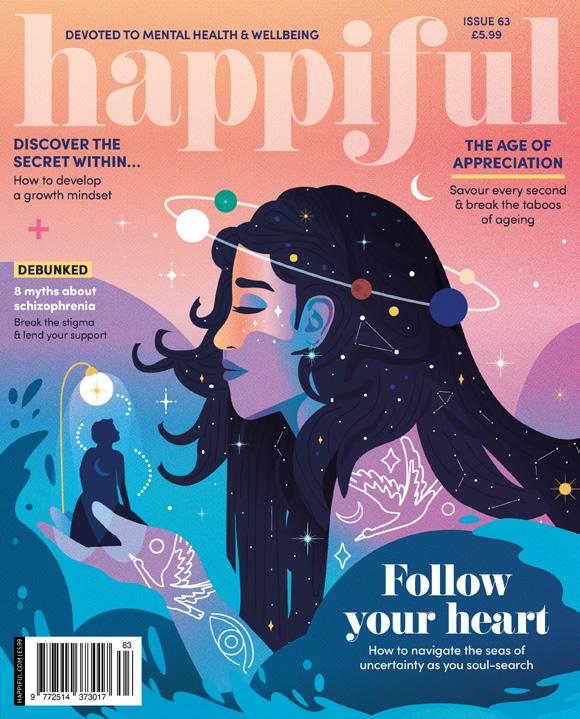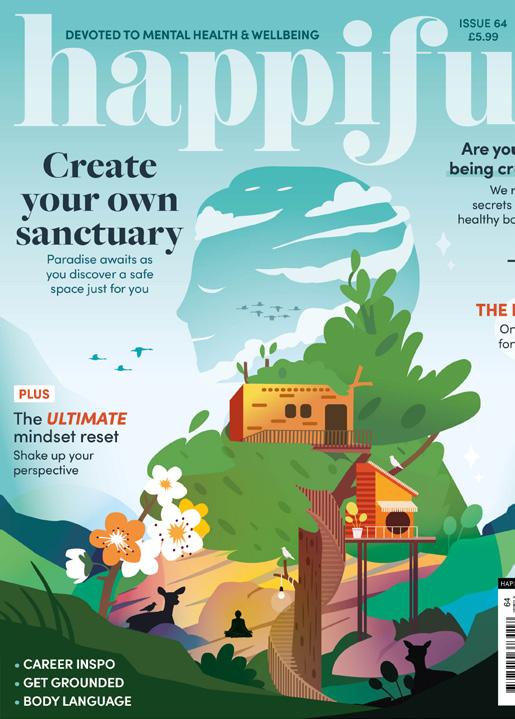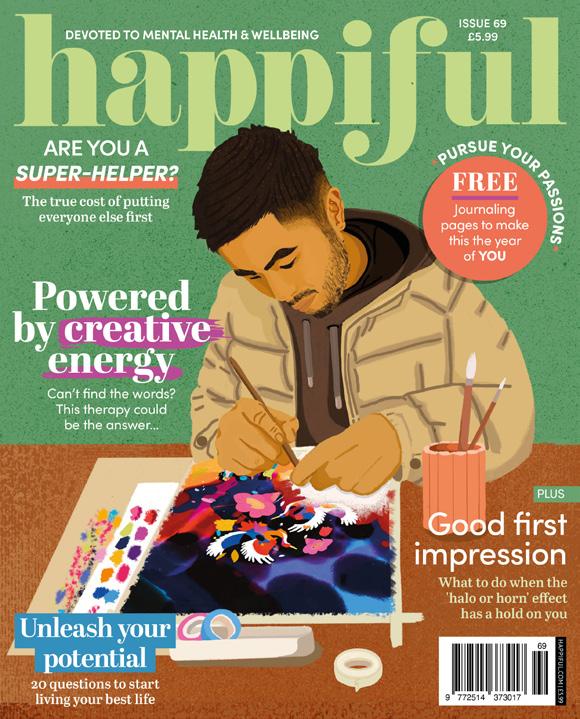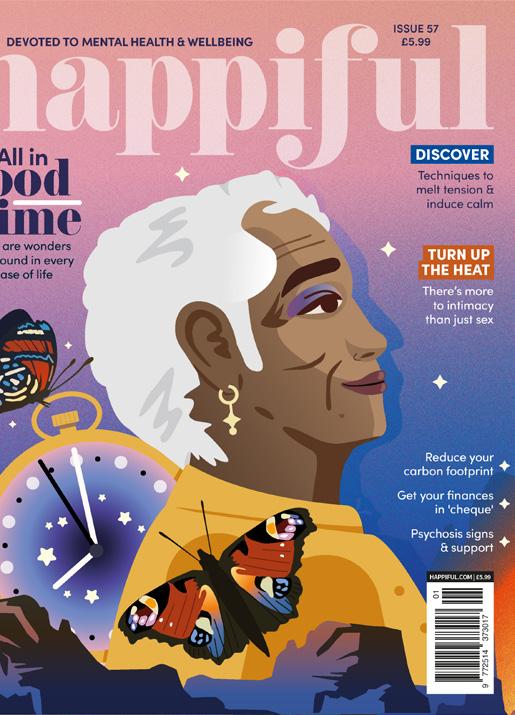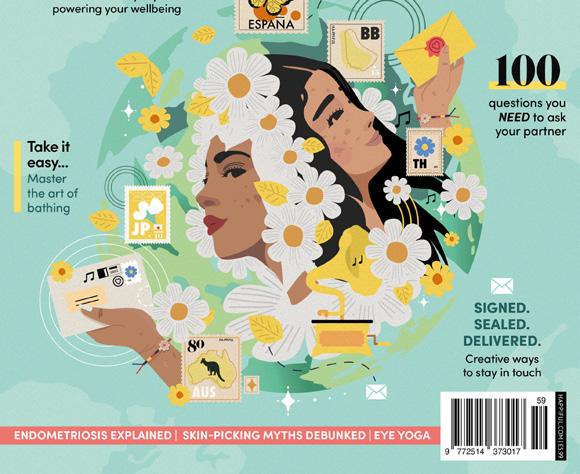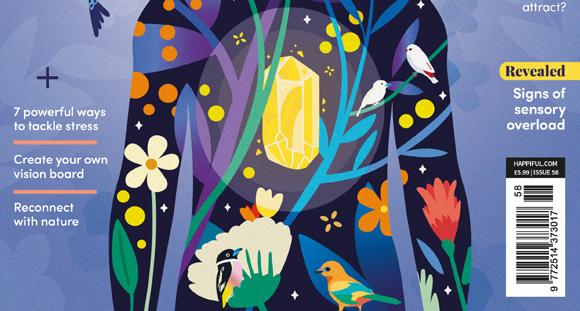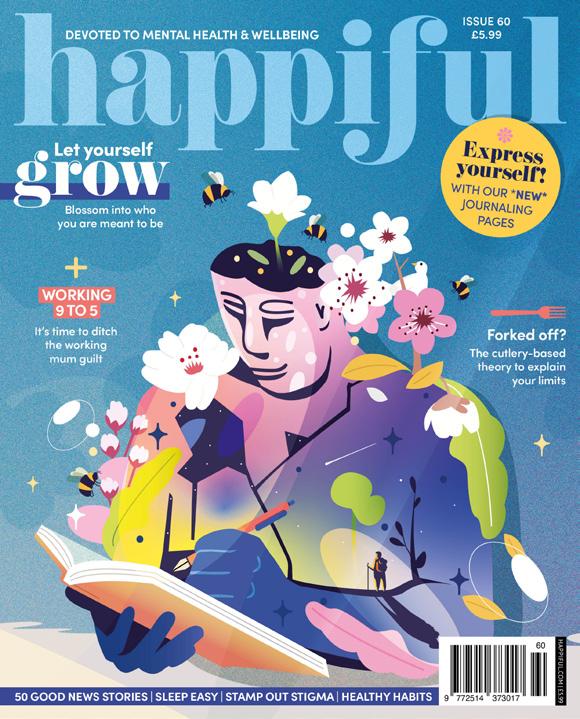What really happens when generations collide?



What really happens when generations collide?



It’s funny, really: emotions are the very essence of being human, and yet we don’t devote much time to truly contemplating them.
Most of us take feelings at face value, or shy away from those with seemingly ‘negative’ connotations, without really thinking about what they might be trying to tell us.
What is behind our frustration that we’re too afraid to voice? Why is it that our eyes mist up when a joyful moment takes us by surprise?
Emotions are complex, and multilayered, and sometimes expressing them can come with a lot of stigma.
But when we withdraw from facing how we truly feel, we risk not recognising the signs that our needs are not being met.
This special edition is dedicated to understanding the full spectrum of our emotional experience, from the powerful ways joy can help counter burnout, to the enlightment we can get from connecting with other generations.

Many of us will have first-hand experience of wanting to hide away from so-called ‘negative’ emotions, but we want to emphasise the fact that there is no such thing!

From our columnist Michelle Elman’s
personal experience with survivor’s guilt, to coping with triggering situations, and redefining our perceptions of rage, there should be no shame in whatever it is you are feeling.
Every emotion has value, and the ability to teach us something. Recognising the full range of our moods allows us to appreciate the light and shade of life, and truly value all aspects of the human experience.
Without moments of sadness, we couldn’t grasp the infinite value of love and contentment.
So, wherever you are on the emotional scale, know it won’t last forever, and there should be no shame or secrecy. Allow yourself to feel it all.
As Yogi Berra so artfully put it: “Whatever you do, you should do it with feeling.”
Happy reading!
REBECCA THAIRAt Happiful, inclusivity, representation, and creating a happier, healthier society are at the forefront of our mission. To find out more about our social and environmental pledges, visit happiful.com/pledges






Every issue of Happiful is reviewed by an accredited counsellor, to ensure we deliver the highest quality content while handling topics sensitively.



Too often, we can become bogged down by the daily grind of life – it happens to us all at some point. This type of burnout can become consuming, and difficult to break free from. Check out p25 for some wonderful guidance on how you can combat this, and integrate something positive into your life: cultivating joy to counter difficult moments. We all need help sometimes, and if you are able to do this independently, you’ll be far better equipped to live

FIONA MCALISTER
BA (Hons) PGDip CertCouns MBACP (Accred)
Fiona is an integrative trauma-informed psychotherapist.

REBECCA KEANE
DIP-NT CNM mBANT mANP rCNHC
Rebecca is a registered nutritional therapist supporting gut health.


Rebecca Thair | Editor
Kathryn Wheeler | Features Editor

Lauren Bromley-Bird | Editorial Assistant
Bonnie Evie Gifford, Kat Nicholls | Senior Writers
Becky Banham | Content & Marketing Officer

Michelle Elman, Claudine Thornhill | Columnists
Lucy Donoughue | Head of Multimedia Ellen Lees | Head of Content
Keith Howitt | Sub-Editor
Rav Sekhon | Expert Advisor
ART & DESIGN
Amy-Jean Burns | Head of Product
Charlotte Reynell | Creative Lead
BSc (Hons) PGCert MBACP
Ian is the founder of Hope Therapy & Counselling Services.

NT DipCNM mANP
Claudine is a naturopathic nutritionist and health coach.

DFSH HPD MCNHC MAFSFH MCTAA
Geraldine is a clinical hypnotherapist specialising in women’s health.

HANNAH BECKETT-PRATT
BSc FdA MBACP

Hannah is a relational transactional analysis counsellor.
Rosan Magar | Illustrator
COMMUNICATIONS
Alice Greedus | PR Manager
CONTRIBUTORS
Hannah Beckett-Pratt, Jenna Farmer, Chloe Stephens, Felicia Jones, Gemma Calvert, Kate Orson
SPECIAL THANKS
Fiona McAlister, Ian Stockbridge, Rebecca Keane, Yvette Vuaran, Geraldine Joaquim, Belinda Sidhu, Lucy Smith, Henrietta Bond
YVETTE VUARAN
BA PGDip BPC UKCP FPC
Yvette is a psychodynamic psychotherapist.
Aimi Maunders | Director & Co-Founder Emma Hursey | Director & Co-Founder Paul Maunders | Director & Co-Founder
For new orders and back orders, visit shop.happiful.com, or call Newsstand on +44 (0)1227 277 248 or email subenquiries@newsstand.co.uk
BELINDA SIDHU

PGDip MBACP
Belinda is an integrative counsellor and psychotherapist.

Happiful, c/o Memiah, Building 3, Riverside Way, Camberley, Surrey, GU15 3YL Email us at hello@happiful.com
HAPPIFUL FAMILY
Helping you find the help you need. Counselling Directory, Life Coach Directory, Hypnotherapy Directory, Nutritionist Resource, Therapy Directory
BA (Hons) PGDip MBACP
Lucy is a relational integrative psychotherapist.
BA DipCoach PCC
Henrietta is a relationships, communications, and leadership coach.
If you are in crisis and are concerned for your own safety, call 999 or go to A&E
Call Samaritans on 116 123 or email them at jo@samaritans.org

SANEline
SANEline offers support and information from 4pm–10pm: 0300 304 7000
Mind

Mind offers advice Mon–Fri 9am–6pm, except bank holidays: 0300 123 3393. Or email: info@mind.org.uk

Switchboard
Switchboard is a line for LGBT+ support. Open from 10am–10pm: 0300 330 0630. You can email: chris@switchboard.lgbt
Learn more about counselling and connect with a professional using counselling-directory.org.uk p22
If you’re struggling with postpartum mental health, find help and a supportive community at pandasfoundation.org.uk p39
Discover more about what it means to live with anxiety, common causes, and guidance at anxietyuk.org.uk p75
Rosan Magar
|

Illsutration
Our two-for-one tree commitment is made of two parts. Firstly, we source all our paper from FSC® certified sources. The FSC® label guarantees that the trees harvested are replaced, or allowed to regenerate naturally. Secondly, we will ensure an additional tree is planted for each one used, by making a suitable donation to a forestry charity. Happiful is a brand of Memiah Limited. The opinions, views and values expressed in Happiful are those of the authors of that content and do not necessarily represent our opinions, views or values. Nothing in the magazine constitutes advice on which you should rely. It is provided for general information purposes only. We work hard to achieve the highest possible editorial standards, however if you would like to pass on your feedback or have a complaint about Happiful, please email us at feedback@happiful.com. We do not accept liability for products and/or services offered by third parties. Memiah Limited is a private company limited by shares and registered in England and Wales with company number 05489185 and VAT number GB 920805837. Our registered office address is Building 3, Riverside Way, Camberley, Surrey, GU15 3YL.
One undeniable truth is that finding the right help for each individual is a journey – what works for one of us will be different for someone else. But don't feel disheartened if you haven't found your path yet. Our Happiful family can help you on your way. Bringing together various arms of support, each of our sister sites focuses on a different method of nourishing your wellbeing – from counselling, to hypnotherapy, nutrition, coaching, and holistic therapy. Download our free Happiful app for more.
Prices and benefits are correct at the time of printing. For full terms and conditions, please visit happiful.com
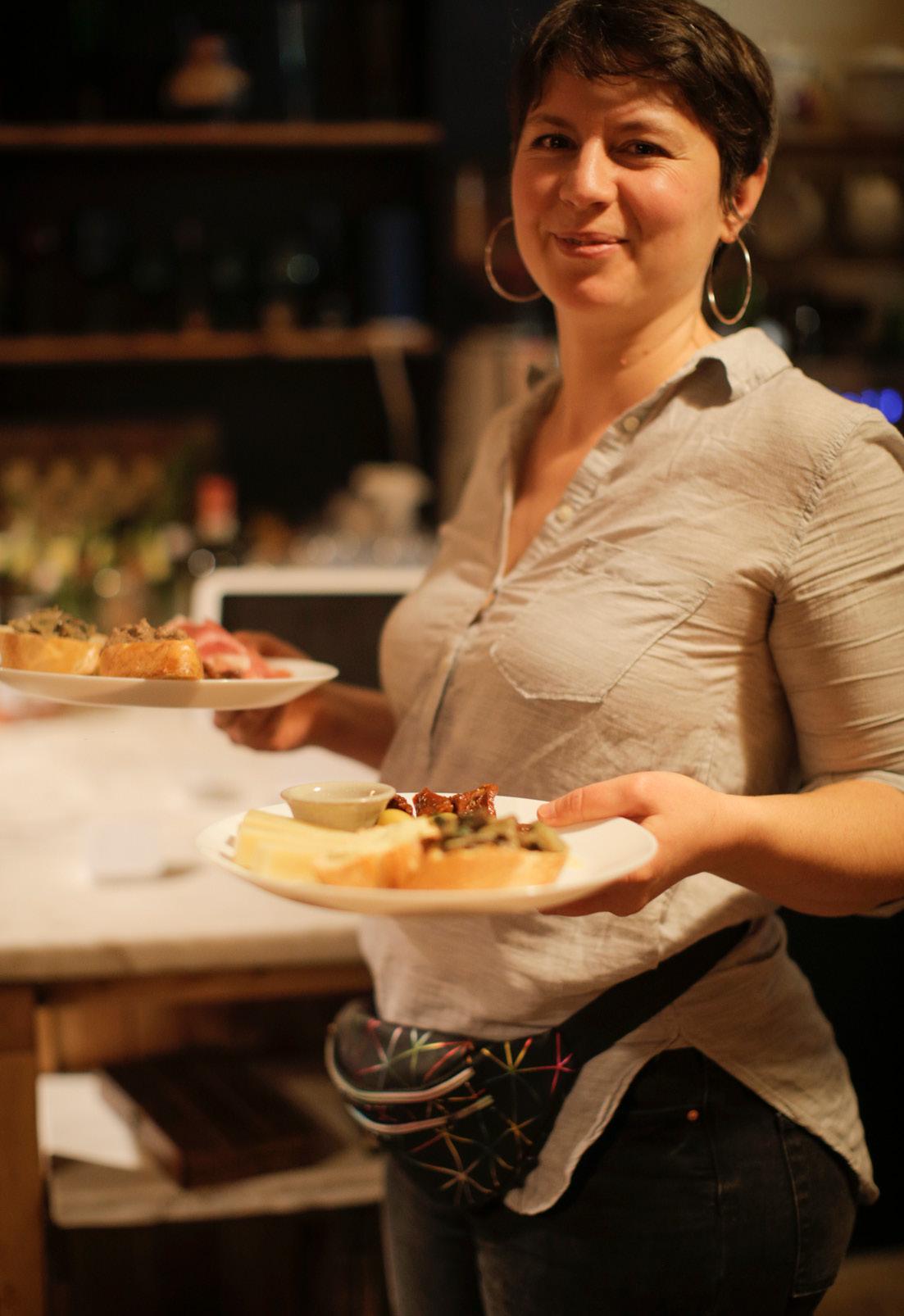
According to the charity Family Rights Group, more than 180,000 children across the UK are being cared for by their kin – a grandparent, other relative, or family friend – due to their parents being unable to care for them. And while it’s an instinctive choice to make, it is a life-altering role that can come with many unique challenges.
Social worker Anna-Lou Manca has witnessed many kinship carers face financial and emotional difficulties over the course of her career, and it was for this reason that she founded Kinship Carers Hub in 2020 – a social enterprise on a mission to help kinship carers get the support they need to fulfil such a rewarding role.
The hub runs many projects –from employment opportunities to webinar training – which are all designed to provide guidance and support to kinship families, but their main project,
Kinship Carers Cooking Club, is one combating social isolation through the power of food. Each week, kinship families come together to cook and eat a meal, provided by the hub.
Aside from the practical support provided through receiving groceries on a weekly basis, and learning about healthy, budgetfriendly recipes, it also offers
the opportunity to bond and access peer-to-peer support. One carer says: “It has allowed the children to see there are other children in the same situation as themselves, to show them that they aren’t alone.”
If you would like support as a kinship carer, visit kinshipcarershub.org
Writing | Lauren Bromley-BirdThe effects of workplace bullying can last a lifetime, chipping away at our confidence and undermining our selfesteem. But Skevi Constantinou, one woman who has been there herself, has come out the other side, and is ready to call for major change to protect others. The former executive assistant was targeted at work over her chronic autoimmune condition, to the point where she eventually felt afraid to go into the workplace. And, sadly, she’s not alone. But despite
Trades Union Congress (TUC) figures that found nearly a third of people have been bullied at work, with more than one in three people going on to leave their job because of it, workplace bullying is not currently recognised as a crime by UK law, leaving the door open for the perpetrators to get away with this behaviour.
“This affects millions of people, not just in the UK but globally,” Skevi says. “It’s so important that these people are represented and not made to feel that this is normal – to go to work and be
With the colder weather and longer nights finally here, it’s time to huddle together and embrace local community spirit. And a new, large, interactive art project in Cornwall looks set to do just that.
Arts Well, a social enterprise that advocates for the importance of creativity in health and wellbeing, unveiled its latest project at Jubilee Wharf in Penryn. A giant nest has been built with the help of neighbouring businesses and local organisations. Part of the national Fun Places initiative, designed to celebrate creativity and promote wellbeing throughout the year, the project
puts playfulness at the heart of what it does.
Made using willow and hazel branches, along with the helping hands of plenty of locals, people were invited to hop in and experience the sense of calm and wellbeing created through being within the nest.

As programme coordinator Vicki Bampfield-Hammond explains, “A nest is a symbol of creativity and nurture, perfect to bring our working and residential communities together. We felt a giant nest was really appropriate, as everyone who wanted to get involved could, nurturing creativity, inclusivity, and community spirit.”
treated that way. Bullies need to be stopped in the workplace.”
She points to Sweden as an example of a country that already has laws that specifically prohibit bullying in the workplace.
“We all deserve to go to work and be respected in a safe environment,” she says. “Whilst my own experiences have shaped me in many ways, I want to help others as best as possible.”
Sign Skevi’s petition by visiting petition.parliament.uk/ petitions/623087
Writing | Kathryn WheelerWhile it remained nestled in Jubilee Wharf throughout the holiday season, the nest will be moved to its permanent home in the new year. Watch this space!
Writing | Bonnie Evie Gifford

When we’re struggling, dogs just seem to know. Whether they jump on our laps for a cuddle or smother us with licks, our companions have a knack for cheering us up. And it turns out, there’s science behind it.
A new study from Queen’s University Belfast has found that dogs can smell stress in humans. When we get stressed, compounds change in our sweat and breath, and this is what our pets are sniffing out.

In the study, samples were gathered from participants before and after completing a difficult maths exercise. Dogs were able to detect which samples came before and after the activity. Ranging from 90% to 96.88%, the accuracy rate was even better than the researchers anticipated.
“While it is likely that in a real-life context dogs are picking up on our stress from a variety of context cues, we have shown, using a laboratory study, that there is a confirmed odour component that is likely contributing to dogs’ ability to sense when we are stressed,” says animal psychologist and study author Clara Wilson.
What we don’t know yet, is whether dogs understand that what they’re smelling is stress, or if they care. While their behaviour suggests they do, which is why they make great therapy animals, more research is needed.
Until then, we’ll conduct our own research with plenty of pet snuggles. For science. Writing | Kat Nicholls
Flossie, who was originally a stray, has been named the world’s oldest cat at nearly 27 years old –equivalent to 120 human years
Starting in 2023, Germany will offer ‘unlimited’ transport on buses, trains, and trams for just £1.40 per day
Letter writing seems to be a dying art in the digital age, despite 84% of kids saying they’d be excited to receive post. The survey, from The Diana Award and Nationwide, revealed that one in three children have never penned a letter, and a fifth haven’t received one in the past three months. In response, the organisations launched The Positivity Postbox, a scheme to encourage schoolkids to pen letters to children in partnering schools around the country. Sounds like a writing revival.
Now that’s a goal England and Arsenal star Bukayo Saka partnered with charity BigShoe, which supports children in poverty to get medical treatment, to pay for 120 children in Nigeria to have life-changing surgery. The incredible gesture helped kids in Kano who were suffering with brain tumours and hernias – and the best news? All 120 surgeries were completed successfully.
Blaspheming isn’t all bad –we swear it’s true! Research from the UK and Sweden suggests that using these traditionally ‘vulgar’ words can actually have positive benefits, when used either to express joy or show solidarity. Despite swearing often not being taken seriously, it’s believed it can help to reduce pain, and even deal with road rage, as well as everyday swearing helping to express emotions effectively. Perhaps it’s a more powerful language tool than you first thought...
England and Everton star Toni Duggan becomes first footballer in the Women’s Super League to take maternity leave
100 UK companies are committing to a permanent four-day week for employees, with no loss of pay, in a milestone move for improving work-life balance. Proving that improving productivity can benefit businesses and workers, could this be a vision of the future?
11-year-old Yusuf Shah, from Leeds, achieved the highest possible IQ score (162) for under 18s, beating Einstein!
Apparently it starts with good grammar! A survey by dating app Badoo discovered that 69% of singletons are ‘turned off’ by badly written messages as a romance is blossoming, and two in five get the ick from text talk. So, typing in full sentences, careful spelling, and ditching the WBUs could be worthwhile when trying to make a new connection.
Getting on the housing ladder is no easy feat, and recent good news has shown that there’s no set timeline for this either. Former care home resident, Edward Simon Jones, 86, recently became the UK’s ‘oldest first time buyer’, and said: “It’s been a long time coming, but it’s certainly worth the wait.” A story that proves you should never give up on your dreams!
Is there a moment you wish you could forget? Well, scientists might just have found the secret. A team from the University of York explored the impact on our memory of playing sounds as we sleep, so whether it’s an embarrasing moment, a bad breakup, or an intrusive thought, we might find certain sounds help us let go in the future.
They may say to not judge a book by its cover, but a new survey by Twinkly unveiled the truth, that parents have a lot of judgements when it comes to fairy tales. It turns out 46% of under 30s think the Brothers Grimm are, well, too grim (and inappropriate)... With 89% believing they perpetuate gender stereotypes, the worst culprit? Hansel and Gretel, which 46% argued was not OK for a bedtime story.

What are our key feelings, and how can accepting them enhance our lives?
Writing | Kathryn Wheeler Illustrating | Rosan MagarThe vast spectrum of emotions can be a minefield. It can be hard to know how to express the things we’re feeling, in part because being ‘in touch’ with our own emotions doesn’t always come naturally – at least, perhaps in this day and age, when putting your feelings aside in favour of agreeableness is common practice.
The task of getting in-tune with our feelings can feel like a mammoth one, but the first step in doing so could lie in identifying our primary emotions, and going from there. The thinking varies slightly on precisely how many ‘core emotions’ we have, but one widely accepted theory from American psychologist Dr Paul Ekman presents six: sadness, happiness, fear, anger, surprise, and disgust.
On his website, Dr Ekman writes: “Emotions are a process, a particular kind of automatic appraisal influenced by our
evolutionary and personal past, in which we sense that something important to our welfare is occurring, and a set of psychological changes and emotional behaviors [sic] begins to deal with the situation.”

When you put it like that, it sounds quite simple. Emotions are just things that happen to us, for the ultimate purpose of survival. Even so, many of us will be familiar with the experience of being ruled by them, as much as being out of touch with them. But does it have to be that way?
“In my 40s, I went through a rough patch in my life, experiencing depression and panic attacks for the first time,” says Fiona McAlister, an integrative trauma-informed psychotherapist. “Out of these experiences, I learned much that lifted me from those states, and introduced new practices into my regular routine that enable >>>
An upsetting emotional state that is linked to other feelings like grief or disappointment.
Pleasant feelings that can lead to joy, fulfilment, and contentment.
An emotion designed to keep us safe, which triggers our fightor-flight response.
When we feel frustrated or hostile.
A positive or negative emotion after experiencing something we didn’t expect.
Feelings of repulsion.
me now to maintain a wellbalanced emotional and physical state. Crucially, this changed mindset, my more awakened understanding, and nourishing practices have supported me to find blissful peace of mind – a peace based securely on the knowledge that I am safe, no matter what happens in my life.”
As Fiona explains, at the heart of her philosophy was the understanding of humans’ primal need for safety – when we don’t feel safe, we cannot function fully
and healthily. Just like Dr Ekman explains, our emotions are there to keep us alive, to alert us to things that aren’t safe, and it’s for that reason that getting to know our core emotions, learning our individual signs, and our triggers, can set us free. For Fiona, that’s achieved with four key steps…
Emotions are just things that happen to us. Even so, many of us will be familiar with the experience of being ruled by them, as much as being out of touch with them
“In order to understand why I was having anxiety and panic attacks, I started learning more about my body, and my physiological responses to the world,” Fiona says. “I learned about the autonomic nervous system (ANS), which runs through the brainstem to the spinal cord and organs, and regulates our internal state, largely through the polyvagal nerve. Essentially, the ANS manages our so-called fight/ flight/freeze responses to external stimuli, and sometimes to our internal thoughts.”
This information prompted Fiona to accept that the sensations she was feeling – for example, tension in her body and a shortness of breath when
she was scared of something –were just a normal part of her physical processing. From there, she was able to accept them and, eventually, with time, even begin to welcome them.
“Learning about the ANS will help you realise and accept that the physical pain or tension you experience during difficult emotions is part of your body’s normal safety response system,” Fiona adds. “Accepting this will give you a powerful way to listen to the safety messages your body is sending you.”
Somatic awareness is all to do with directing your attention to the sensations in your body for the purpose of self-healing. Fiona recommends the following exercise to get you started:
• Close your eyes and breathe, letting the breath be whatever the breath is in that moment, and tuning-in to the inhales and exhales, moment after moment.
• Allow your body to relax, feeling supported by the chair under your legs and behind your back. Let your body sink into the seat, let it hold you, you are safe.
• Now, focus your attention within your body, seeing if you can find any sensations therein. You might notice tension, tingling, looseness, warmth, or cold –anything at all that rises in your awareness.
• Just be with that sensation –there’s no judgement, no right or wrong, there is only this,
whatever sensations you’re feeling. You might breathe into the sensation, feeling your inhale moving to that part of your body. You might want to fill the sensation with colour or warmth. Just let it be.

• Then, when you’re ready, start to come back to the room. Tune back into the noises around you, feel your feet on the floor and the chair solid underneath you. When you’re ready, rub your hands together and gently place them on your face to bring yourself back to the room, back to your environment and present. Open your eyes.
If you haven’t yet stretched into the world of yoga, it may not be the first thing you think of when considering ways to connect with your core emotions – but it might be time to think again.
Next time you feel a perceived ‘negative’ emotion towards someone else, Fiona recommends saying the following lines to yourself:
1. Yes, I’m angry with them. I believe they let me down. That makes me feel bad and now I feel a pain in my chest as I think about what they did. I am not ready to forgive them.
2. However, I accept all of this. I accept that I feel bad, that I feel angry. I accept that my chest hurts. I accept it all without judgement –how I’m feeling is not right or wrong, it’s not good or bad – it just is. How I’m feeling right now is just how I’m feeling. All feelings and sensations are welcome.
3. In accepting these feelings and sensations, I accept who I am and I let myself be who I am.
4. I can love all the parts of myself that are talking to me right now. I can be with myself and love myself. I am OK.
“For those of you who are more active, mindful movement is a beautiful way to contact the body and create that space for the body to be heard,” Fiona explains. “In my experience, there’s no better activity for this than yin yoga – a practice that takes your body gently and slowly through a series of asanas (or postures), giving time to hold each posture for two to five minutes.”
You may be able to find classes in your area, but many are also available online. The practice is all about being very mindful of the things that you are feeling, both emotionally and physically.
“For me, all these practices lead towards that magic ingredient: the bliss of acceptance,” Fiona says. “Just to be clear, acceptance is not the same as forgiveness. If someone has hurt you, you may not be ready or able to forgive or forget.
Acceptance is about accepting that all aspects of the experience are real and OK.”
In the moments when you’re rooted to the spot by your emotions, or when the pursuit of the ‘right’ emotions prevents you from being present, seeing your emotions as a survival tool, and detaching them from ‘right or wrong’ is freeing. And, it turns out, your body may hold the answers you seek.
Fiona McAlister is an integrative trauma-informed psychotherapist. Discover more on the Counselling Directory.

Have you ever started dating someone, and felt like it’s gone from zero to 100 almost overnight? If you’re in a relationship that feels overwhelmingly intense, it could be a sign of love bombing
Writing | Bonnie Evie Gifford Illustrating | Rosan MagarPassionate, exciting, fastpaced – it might seem more like a romance movie than real life. It’s like they can’t get enough of you, with the constant compliments, loud exclamations of love and devotion, along with grand gestures, and (expensive) gifts. They want to spend every minute with you. And who doesn’t love to feel loved?
But what happens when those gestures of love and tenderness come at a price? What if those overwhelming shows of affection aren’t actually about expressing how much they care, but a way of gaining control?
According to experts, love bombing can be a sign of a toxic or abusive relationship. If you’ve ever felt that your partner’s pace is overwhelming, their attention relentless, and have been unsure if it has made you feel unbelievably happy,
unpleasantly uncomfortable, or a mixture of the two, then you may have been love bombed.
“Love bombing is a term used in psychology and sociology to describe a type of behaviour in which a person demonstrates an excessive amount of love and affection for another person,” counsellor Ian Stockbridge explains. “The goal of love bombing is to make the recipient feel loved and important. It can be used as a technique to control or manipulate someone, or to win their affection. Love bombing can be manipulative and emotionally abusive, as the recipient may depend on the bomber’s constant attention and affection.”
For many of us, the more affection we receive, the better we feel. But that’s the problem – the more we feel pulled into the onslaught of affection and attention, the harder it can be to recognise other red flags in your relationship.
While this tactic is most frequently used by narcissists, abusers, and con artists, not everyone is aware when they use this tactic. For some, growing up in a family or culture where overt expressions of love and affection were normal, can make them more likely to shower others with attention, without
considering that this may make others uncomfortable.
For others, a lack of connection or feelings of insecurity may push them to move too fast, in an effort to form long-lasting attachments. Some may unconsciously take on negative behaviours (love bombing) due to past relationships. Yet for others, it is a way to manipulate, influence, or take advantage in order to gain what they want.

That initial honeymoon stage of a relationship could actually be hiding warning signs of love bombing – if the gestures here tend to be thoughtful and personal it’s more likely to be genuine, but watch out for those aiming to merely overwhelm and impress.
The following are some of the key warning signs to keep an eye out for. Someone might show a few or many of these behaviours, so it’s important to consider the intensity, how they make you feel, and their
reactions if you try to raise concerns. If in doubt, trust your instincts.
• Over-the-top gifts or gestures. They bombard you with extravagant gifts that are attention-grabbing. These may not be thoughtful (e.g. not tailored to your specific interests), but may still seem generous, or create a sense of debt to the gifter.
• Constant compliments. This can be in an overwhelming way, e.g. “You’re the most beautiful person I have ever met,” or “I can’t imagine my life without you.” They may also push for you to express similar sentiments.
• They demand attention. Every gift or grand gesture needs to be recognised and rewarded. They may insist on spending most or all of your free time together, making you feel guilty if you express a need for space. If you don’t respond to their messages quickly, they may bombard you with more, or withhold affection.
• Things are done publicly. Whether physical or digital, they like to be seen to be sharing public displays of affection. This could take the form of gushing posts on social media, or giving gifts in front of others.
• Things feel intense and unbalanced. Perhaps they say I love you after just a few dates, or want to introduce you to their friends or family early on, or discuss your long-term future before you’ve had the chance to really get to know each other.
• They want commitment too soon. They may push for the next steps before you feel >>>
ready. This could mean wanting to move in together quickly, rushing to announce your relationship to others, insisting on meeting parents, or even getting engaged quickly.
• You feel the need to react with care. You worry that if you don’t show the right level of appreciation, they will become cold, distant, or use the ‘silent treatment’ to get you to make things up to them. You feel the need to respond to messages instantly, or risk being bombarded with more messages, or feeling guilttripped. You feel like you are walking on eggshells if you don’t have the ‘right reaction’.
Love bombing is typically a phase within a relationship. It may last for weeks, months, years, or even longer. It’s important to know that over time, the benefits the love bomber receives from this behaviour (the ‘emotional high’) start to lessen, which can mean that they begin to change their behaviour. This can lead to a withdrawal of affection (physical and emotional), and the use of other emotionally abusive or manipulative tactics, such as criticising or undermining you, making you feel guilty, shaming you, gaslighting, setting
unrealistic expectations, or invalidating your experiences or feelings.
are being love bombed, do what you can to safely remove yourself from the situation.
Relationship experts consider love bombing to be unhealthy. For many, it’s a red flag, as it can make it hard to maintain personal boundaries, and pushes one person to feel indebted to the other. Over time, you may begin to excuse other worrying signs of manipulative, controlling, or abusive behaviour, as you feel dependent on the person who has been love bombing you. You may even feel unable to ask for help, as you worry others won’t believe what is happening – having only seen the public displays of affection – or that you should have seen the signs sooner.
Whether their actions are intentional or not, the love bomber is looking for control and power. So,if you think you
If your relationship is new, and you think your partner may be going over the top rather than love bombing, sitting down to have an honest conversation can be a positive first step. Setting boundaries, communicating effectively, and making sure you both stick to these boundaries can lay the foundations for a healthy relationship. If you find the same patterns of behaviour sneaking back in, or feel that your partner is deliberately trying to manipulate the situation to get around your boundaries, this can be a huge red flag.
Over time, love bombing can negatively impact your selfesteem and self-confidence, leaving you doubting yourself or even feeling ashamed. Speaking with someone outside of your relationship can be a great way of recognising, acknowledging, and discussing your concerns. Whether this is with a friend, family member, or professional therapist, this can help you to see behaviours in new lights, and validate how you are feeling.
You feel like you are walking on eggshells if you don’t have the ‘right reaction’
Going through a traumatic illness or experience is unimaginably difficult – so making it through the other side is something to celebrate, right? But what people often struggle to vocalise is the confusing mixture of feelings that accompany this, and the burden of guilt that can, unfairly, weigh heavy on you
Iremember the first time I heard the words ‘survivor’s guilt’. It caught my attention because it was finally a phrase that I could put to how I had been feeling for the last decade of my life.
For a little context, I’ve had 15 surgeries and, in many ways, shouldn’t have survived. If I had been born a few years earlier, or in a family with less financial privilege to afford the medical care I did, I would not be alive, and I have been acutely aware of that fact since the age of 11.
The problem is, at 11, it is a very adult problem to have when you are still very much a child, and with the limitations of the vocabulary of a child, and the confusion that comes with not being able to articulate how you feel. At 11 years old, I had been in the ICU for three months, and because the ICU was where the most ill children were in the hospital, I witnessed more deaths of children from six months to 15 years old than one should ever experience, and as each death occurred, it often made me wonder why I was still here. Why was I
surviving? What was so special about me?
The only way I found to console myself at that age was to tell myself that I would do my best to compensate for those lives by spending my own trying to help as many people as humanly possible… I hoped that it would make up for it, and decided to never vocalise this guilt.
As much as it’s called survivor’s guilt, there are many other emotions encompassed in it, and the other main one was shame. Shame breeds silence, and so this became my deep dark secret, and ultimately led to me working so hard to overcompensate for all the lives lost.
I was often told in hospital ‘Everything happens for a reason,’ and this made the guilt so much worse. It forced me to try to make meaning out of something that has no meaning and doesn’t make sense. When someone tells you that everything happens for a reason, and you can’t find one, you begin to believe the reason is you, and that’s where the blame comes, along with the shame.
Survivor’s guilt is nonsensical. Logically and rationally, you can understand you did not do anything to cause their death, but emotionally, it feels unjust and unfair.
What I wish someone had told me back then was that it was not my responsibility. It was not my fault that others had died and I had lived and, most of all, no one should have to earn their right to life. The fact is there is nothing special about me. There isn’t a reason why I survived and others didn’t, and the most peace I have found is understanding that sometimes shitty things happen, and not everything has a reason or a purpose.
I only began processing all of this while writing my first book, Am I Ugly?, and discussing it in depth meant I finally put words to how I’d felt for decades, and those words liberated me. When you stay silent, the guilt (and shame) stays stuck within you. Being able to talk about it also gave me permission to live my life for me again. It’s a big burden when you are living your life for more than
50 others, and hoping your life has sufficient impact to mean enough.
Realising that wasn’t my burden to bear was life-changing though, so if you are going through survivor’s guilt, I want you to know you aren’t alone, and that this is not your burden to bear. One of the best things that helped me let go of survivor’s guilt is understanding boundaries, and realising that I cannot carry someone else’s emotions for them. Of course, I will always remember those moments in the ICU, but if I
live with them in the forefront of my mind everyday, I am limiting myself from enjoying my life fully and, ultimately, that would be the greatest disservice to the people who passed.
I didn’t know the names of most of the kids who passed in that ICU, I didn’t even know all their faces, but what I do know is that if you are still alive and breathing, your only job and responsibility is to make the most of your life, for you.
The best way you can let go of the survivor’s guilt is to shift the
guilt into gratitude. I will forever be grateful that I survived, but my survival didn’t depend on their death, and they didn’t die so I could survive. You can only be responsible for your own choices, actions, and you do not have that power and control over whether another lives or dies, because frankly, believing my life impacted their loss of life, was me thinking too highly of myself!
Author, TEDx speaker, and five-board accredited life coach Michelle Elman is Happiful’s new columnist. Follow her on Instagram @michellelelman


If you are going through survivor’s guilt, I want you to know you aren’t alone, and that this is not your burden to bear

In the summer of 2020, I burnt out. I was running a side business alongside my job here at Happiful and, compounded by pandemic stress, it all got too much. I pressed pause on my business, and used the extra time to prioritise rest and joy. I slept in, started drawing, read more fiction, and watched films that inspired me. I filled my cup and, in time, I found my way back to me. But the me I found was different. I had a new perspective, and realised how important joy was in having a fulfilled life and, ever since, I’ve been making decisions that prioritise cultivating joy. Now, this wasn’t a truly conscious decision at the time. I was simply exhausted and needed a break. But I’ve now learnt that joy may actually be what we all need to help build resilience, and overcome burnout.
To really get to grips with this concept then, it’s best to start with the basics and ask: what exactly is burnout?
“Burnout is a state of physical and mental exhaustion brought on by excessive and prolonged periods of unmanaged stress,” explains positive psychology practitioner and joy coach Sophie Cliff.
“The World Health Organisation categorises burnout as having three distinct symptoms –depleted energy and exhaustion (always feeling tired, no matter how much you rest), feelings of negativity and cynicism (struggling to find the silver linings, or feeling like nothing you do will make a difference), and reduced performance (struggling to achieve at the same level as you might have done in the past).”
Sound familiar? While the World Health Organisation typically sees burnout as purely work-related, many of us now recognise that
burnout can be caused by a range of issues, from parental burnout to autistic burnout.
A common thread through all types of burnout is the way it makes us feel: exhausted, frozen, and unsure of how to keep going. Something that can help us move forward is that oh-so-elusive resilience. Often viewed as our ability to ‘bounce back’, resilience isn’t about ignoring what’s happening and simply pushing through. It’s about giving space to your feelings, acknowledging them, and doing what you need to feel better.
“Resilience can take different forms,” Sophie says. “For some people, it will look like bouncing back to old routines quickly following adversity, while for others it might be having the ability to start over and adapt to a new normal following a period of stress.” >>>
Whether you want to prevent burnout or recover from it, resilience is essential – but did you know joy could be the secret to building it?
Interestingly, Sophie notes that joy can help us cultivate resilience in a number of ways.
“Firstly, research shows that experiencing and focusing on little moments of joy helps our bodies recover from the physiological effects of stress. Joy can also give our lives a sense of meaning and purpose, which, in turn, boosts our capacity to deal with challenges and bounce back from adversity.”
The fact that joy can give our lives a sense of meaning is something I can attest to. When I burned out, I felt lost and unanchored. And when I focused

on doing things that made me happy, including starting a brand new hobby (drawing), I broadened my vision of what it means to live a fulfilled life. I took some of the gargantuan pressure and focus I’d put on my work life, and divvied it into my life outside of work.
As Sophie explains, broadening your thinking is a key part of joy and positive emotion, helping us manage stress.
“This is best understood using the broaden-and-build theory. According to social psychologist Barbara Fredrickson, while negative emotions can prompt us to employ narrow, survivaloriented behaviours (such as engaging the fight/flight/freeze response), positive thoughts and emotions broaden our awareness, and encourage new thoughts and actions.
“Her broaden-and-build theory explains how, when we experience positive emotions such as joy, we broaden our thinking,” Sophie says. “This allows us to draw on a range of possible solutions and behaviours, therefore, building a whole host of mental resources (including resilience) that help us to live enhanced, healthier, and more fulfilling lives.”
Apparently, we also experience this as a positive upwards spiral – which means the more we experience positive emotions, the greater the benefits.
This is all well and good, but the idea of embracing joy when you’re burnt out (or close to burnout) can feel incomprehensible, and it’s important to recognise that it isn’t a feeling we can just ‘switch on’. Allowing what are often perceived as ‘negative’ feelings to be there is important, and this isn’t about smothering them with rainbows and fake smiles. It’s about honouring those feelings, and looking for glimmers of light to pave a way forward. So, how can we do this?
ones, and fostering connections within our community can help to cultivate joy.”
Practising gratitude can be as simple as noting down one thing you’re grateful for every day, or taking a moment to really relish in a much-loved routine. You could even combine this with social connection. Why not start a gratitude WhatsApp group with your friends so you can prompt each other?
Finally, we know that joy can feel like a big emotion to capture, but Sophie reminds us that it can be small, too.
“Remember that joy isn’t reserved for the big moments, or for when our lives feel perfect. Often, joy is there in the small moments that we overlook – the first cup of coffee of the day, a beautiful sky, a cuddle with a pet. By appreciating and being more present for those moments, we can experience more joy in even the most average day.”
“One of the simplest ways we can start to prioritise joy is by practising gratitude,” Sophie says. “Research tells us that being thankful for what we have is a prerequisite for experiencing joy, and it can also help us to avoid comparison and feel more present.
“Connection is another wellresearched strategy – humans are wired for sociability, so spending quality time with loved
So yes, burnout can leave us in a dark place… but being present for moments of joy could just give us the spark we need to reignite our fires.
Sophie Cliff’s book, ‘Choose Joy’, is out now, and looks at the ways joy can help us prevent burnout while offering practical exercises to prioritise joy. Learn more at sophiecliff.com
Remember that joy isn’t reserved for the big moments or for when our lives feel perfect
Looking for simple, quick, and effective tips for tackle the green-eyed monster? Here are seven ways you can conquer feelings of jealousy for good
Jealousy is rarely a good look on anyone. Whether you’re feeling jealous of a friend’s latest holiday, a family member’s good news, or even a colleague’s promotion, a little bit of jealousy can motivate us. But when we feel it too much or too often, it can risk hurting our relationships and damaging our wellbeing.
So, how can we overcome jealousy?
Learning how to recognise, acknowledge, and tackle unhelpful feelings can be daunting. But being able to identify jealousy is the first step towards confronting why you are feeling this way, and finding healthier ways to process these thoughts and feelings.
Often caused by fear, low self-esteem, or insecurity, it’s important to remember that feeling jealous doesn’t make you a bad person. Speaking to someone you trust can help you to work through these difficult feelings, as well as reframe things in a different light.
Acknowledging how you are feeling can help you to address the elephant in the room, leading to self-reflection and opening the way for personal growth.
Gratitude isn’t just about being polite. It’s about noticing the good things in life and showing genuine appreciation for them. When people regularly practise gratitude through reflection and expression, many find that they experience more positive emotions, see improvements in their sleep patterns, and even develop higher levels of self-esteem.
Practising gratitude can help to alleviate stress, reduce feelings of jealousy, and help us to appreciate the things that we have, instead of focusing on what others have.
When you next feel jealousy rising, take a moment to stop and acknowledge how you are feeling. Instead of reacting, or allowing these feelings to fester, step away from the situation and allow yourself to take a break.
Try going on a short walk or taking 10 minutes to do something else you find calming, like listening to music or making a hot drink. Or try writing down how you are feeling, then leaving it to come back to later. Readdressing these thoughts and feelings when you are calmer can help you to view them more rationally, allowing you to work through them without the risk of saying or doing something you may later regret.
Counselling can be a helpful method of working through jealousy. A qualified, experienced therapist can provide a safe space to explore feelings, challenge unhelpful thoughts, and discover new ways of moving forward.
Cognitive behaviour therapy (CBT) can help you to better understand your feelings, recognise and break negative thought patterns, and discover new, healthier ways of reacting. Another helpful option can be cognitive analytical therapy (CAT). This can help you both challenge and change negative thought patterns, as well as look
at past experiences, helping you to understand why you think or behave this way.
5. Practise mindfulness
Mindfulness is all about being aware of our thoughts, feelings, environment, and how our body feels without offering judgement or criticism. Allow yourself to feel and acknowledge jealousy. Increase your awareness of when these feelings rise. Soon, you will start to notice any patterns or common triggers that you can go on to address.

6.
Hypnotherapy can help to reduce and even get rid of feelings of anxiety, fear, and low selfconfidence, as well as help to boost self-esteem – all of which can be key contributing factors to jealousy. Your hypnotherapist can help you identify and tackle these root causes, allowing you to better understand what you are feeling, why you are feeling this way, and how you can move forward. They may also introduce you to selfhypnosis techniques.

7.
It’s only natural to want ‘negative’ thoughts and feelings to go away. But, sometimes, we need to give things time to fade. According to research, we’re more likely to feel jealous before something happens, rather than during or after. While you might feel jealous of your friend’s big holiday plans right now, once they’ve set off, you might start to feel less jealous, and actually happy for them, instead.
When Jenny* began counselling, she felt stuck. She used to know what she wanted from life, but now found herself feeling lost and unsure of herself. Mike* entered therapy with an anxiety that kept him up at night. During the day, he felt invisible, overworked, and teetered on the edge of burnout. Samira* had a sense of hopelessness about the world. She often talked about oppressive social systems that left her with fewer opportunities than her husband, but felt as though there was nothing she could do about her future.
All of these clients came to therapy with different symptoms, histories, and relationships. What they had in common was that concealed anger was underlying their presenting issues. They each wanted to feel more alive, empowered, and capable of living
the lives they wanted. Perhaps surprisingly, the key to this is learning how to access and use anger to solve our problems and achieve empowerment.
Anger is a natural and appropriate emotional response to something external that is in conflict with our personal values. It arises when our boundaries have been crossed, when someone does something we disagree with, or treats us in a way we dislike. Anger is a powerful sign that our needs are not being met.
Yet, anger is perhaps the most misunderstood and frequently denied emotion. I hear many clients make statements such as “I’m not really an angry person,” suggesting a cultural misperception that feeling anger is a fixed and inescapable part of our identity, rather than a transient emotional experience.

In reality, if we acknowledge anger and express it appropriately,
it will resolve, like any other emotion. It is actually when we disavow anger that it becomes detrimental to our wellbeing.
Expressing anger often involves confrontation with others. If we are in any doubt that the relationship can withstand
Anger is a powerful sign that our needs are not being met
*All client examples are fictional accounts based on a collection of the author’s experiences
such a rupture, denying our anger becomes a way to avoid relationship breakdown. In the moment, it seems far simpler and less frightening to pretend we are not angry, so we turn anger inward, hoping it will subside. However, this only internalises the conflict; creating anxiety, low mood and a sense of being stuck.
What is the difference between anger and violence?


Another reason anger is denied, particularly in men, is because it is confused with violence. However, whereas anger motivates us to problem-solve, violence is actually a passive behaviour. When people are unable to express anger in a safe,
healthy, and productive way, they are more likely to discharge angry energy with violence. This may feel like a temporary release, but it fails to address the problem which created the anger in the first place. Expressing anger healthily is about active problemsolving, not violence.
How can we recognise repressed anger?

Anger is a powerful emotion that, when left unexpressed, takes up a lot of energy. Physically, it can leave us feeling drained and exhausted, but sleep does not help, because anger is not relieved by rest. Restoring our capacity requires an appropriate release of the pent-up angry energy.
Clues that anger might be underlying our behaviour include being short-tempered and passive-aggressive with others. For example, we may expect others to know what we need without telling them, then feel >>>
short-changed when they don’t comply with our unspoken wishes. Alternatively, we might over-adapt to others. As humans, we push each other’s boundaries frequently, so it’s natural to feel angry sometimes. If we ignore these feelings, it’s likely that we are ignoring our own needs and, instead, prioritising the needs of others.
Emotionally, feelings of being stuck, low self-worth, and helplessness as a result of not asserting your own needs and boundaries can be a sign of chronic repressed anger.
When expressed healthily, anger can be an empowering and protective force which improves confidence, selfesteem, and personal agency. When we allow ourselves to feel anger and express it appropriately, we are communicating that our boundaries deserve to be respected. This is empowering and becomes strong evidence that we can meet our own needs and protect ourselves. Over time, this will translate into increased confidence and a sense of self-worth. Anger is a signal from the body that we need to act on something to achieve justice. When we consider anger this way, it becomes an important part of our individual empowerment.
Expressing anger is all about ownership. Anger is your feeling in response to something that has happened. When we project it externally and make blaming statements such as “You made me feel…”, we create a battle of defences that rarely helps us solve our problem. Try using ‘I’ statements to communicate your feelings, followed by what you would like to happen, e.g. “I felt angry when you overlooked my contributions in the meeting last week, and I would like to discuss my suggestions on this project.”
Anger produces highly physical charges within the body, which are often felt in the arms and chest – a sign the ‘fight’ part of the nervous system’s ‘fight-or-flight’ response has been activated. This is why ‘calming down’ is often unhelpful in releasing anger. Expressing anger through movements involving the upper body is a great way to discharge this pent-up energy. Book a boxing class at your gym, throw tree branches around in a woodland, or even take a red felt-tip pen and scribble swear words into a notebook.
Often we minimise our anger by saying things like “I’m not angry, I’m just annoyed.” If we think of anger as a scale, ranging from slight irritation to full-blown rage, then frustration, annoyance, and agitation are all derivatives of anger. It’s OK to allow yourself to recognise anger for what it is, and not minimise your experience by giving it a softer label.
Try reflecting on events surrounding your anger to better understand your triggers. E.g., if you felt incensed when a car cut you up on the motorway, question what evoked your rage? It might be feeling like someone else has put you in danger, or that the world is not safe for you, suggesting fear lies beneath your anger.

Connecting with anger might be difficult if you grew up in an unsafe environment, perhaps featuring domestic abuse, or a parent with an addiction. A counsellor can allow you to safely explore your relationship with anger and how to respond appropriately, unlocking a greater connection with yourself and others.
When is being ‘too sweet’ a bad thing? Well, despite conjuring up imagery of kind and loving people, or a nostalgic treat for yourself to enjoy, the truth is, when it comes to nutrition, sugar can be a sly substance. It’s probably in more foods than you realise, from breakfast cereals and packaged fruits, to salad dressing and pasta sauce. And while a lot of us enjoy something sweet now
and again, like many things in life, too much of a good thing is not always healthy. In fact, too much sugar can lead to high blood pressure, weight gain, tooth decay, and even certain types of cancer.
What is sugar addiction?

First things first, there is no shame in enjoying sweet flavours. And there is a big difference between liking a sugary snack now and then, and actually finding yourself
with a sugar addiction. With the latter, sugar addiction can be behavioural (when you eat despite not being hungry, or snack compulsively) or chemical (when your body experiences negative effects or physical cravings if you try to cut down or stop eating sugar). Essentially, the stage where it becomes a problem is when the sugar reliance is affecting you mentally and/or physically, and you feel as though you can’t do without it. >>>
What if your appetite for sweet treats is actually a sign of something more? We share the signs and symptoms of sugar addiction, and how to break the cycle
Studies have revealed that eating too much sugar can lead to:

• Cravings, sugar tolerance, and higher consumption
• Binge-eating
• Withdrawal symptoms
• Emotional or psychological dependence
• Unhealthy coping mechanisms
For many people, the main draw of eating sugary foods or drinks is that they can give you a shortterm energy boost. When we feel stressed, tired, or anxious, we may turn to sugar-filled foods or snacks to try to experience this quick energy release we need – even though it is a short-term solution to what is often a long-term problem. In turn, this can lead to associating certain foods that are high in sugar with feeling happier and filled with energy, thanks to the release of endorphins. When we do this too often, a one-off comfort can become an unhealthy way of trying to cope with other feelings we are trying to avoid.
If you’re worried you might have an unhealthy relationship with sugar, there are many common signs you can keep an eye out for. Ask yourself:
• Do I feel guilty when eating?
• Do I hide what, when, or how much I am eating from family, friends or colleagues?
• Do I make excuses about what I’m eating? (I’ll eat healthier tomorrow; I had a hard day, I deserve a treat)
• Are my portions getting bigger?
• Am I hungry when I eat?
• Do I eat when I’m feeling emotional? (Sad, upset, stressed, to celebrate, for comfort)
• Is the food I eat really sugary or salty?
• Do I often feel sleepy, low energy, or lethargic after eating or snacking?
• Do I feel in control when I’m eating?
Frequent headaches, skin breakouts, increased feelings of anxiety or depression, nausea, fatigue, and trouble sleeping can all also be common physical and psychological side-effects. As with any health concerns though, it is always important to speak to your GP as soon as possible to rule out any other issues.
Why do some people develop a sugar addiction? Research published in 2017 revealed that sugar is actually more addictive than opioid drugs such as cocaine. And the problem is that when trying to cut it out, it can lead to withdrawal symptoms. Eating sugar can actually alter your mood in the same way drugs can, inducing a sense of reward and pleasure. As many of us consume up to three times our recommended daily sugar intake, this can put us at risk of becoming reliant on the way that sugary foods make us feel, so it’s even harder to reduce our intake.
The good news is we don’t have to feel like we’re held hostage by sugar cravings. Try these six effective tips to get started:
1. Get in the right mindset. As with all addictions, you need to be ready to accept that you have a problem, and want to make changes, in order to set yourself up for the best chance of success.
2. Ensure you’re getting enough nutrients. According to a 2019 study, almost half of Brits have no idea how much protein, carbs, sugar, fruit, and veg, they should eat in a day.
Eating enough protein and healthy fats can provide a slow, steady release of energy – the opposite of the instant rush sugar provides. Protein helps us to feel satiated, reducing feelings of cravings and hunger. And when moving away from a high-sugar diet, you may need to replenish vitamin B levels, which can become depleted due to sugar and high-stress levels.
A nutritionist could help you learn more about healthy eating, and what you really need to ensure you have a balanced diet.
3. Identify (and tackle) lifestyle red flags. We can inadvertently form unhealthy habits without even realising it. Not getting enough sleep, or having poor quality sleep, can trigger excessive eating, as you try to combat fatigue and lethargy, while high levels of stress can lead to
emotional eating and unhealthy coping mechanisms.
When we feel overwhelmed, it’s easier to turn to fast food, takeaways, ready meals, and pre-prepared options that are often highly processed and filled with sugar. Recognising unhelpful habits can help you to identify areas which may be inadvertently leading to higher sugar consumption.



4. Head off your cravings. Start your day off right with a highprotein breakfast to reduce cravings. Plan ahead for meals and snacks to avoid temptations when picking up lunch at work, or trying to cook while tired and stressed. Swap in healthy veg options, like carrots and sweet potatoes, as well as naturally sweet fruits like bananas and dates, to help satisfy your sweet tooth.
5. Avoid artificial substitutions. Research suggests that artificial sweeteners can leave you craving sugar more, while continuing to appease your taste for overly
Cutting out sugar completely can sometimes lead you to feel awful in the short-term. While some people swear going cold turkey is the best way to break a habit, for others, it can set them up for failure. Making drastic changes to your diet without looking at underlying issues that lead to your poor diet means you are at higher risk of falling back on old habits, while also feeling like you’ve failed. Overcoming a sugar addiction isn’t just mind over matter; it’s making a series of sustainable lifestyle and mindset choices to last you a lifetime.
sweet foods. If you can, cut down or avoid these.
6. Try hypnotherapy.
Hypnotherapy can help you to address your unhealthy relationship with food, change unhelpful eating habits and behaviours, while introducing
you to new ways to cope with stress and overwhelm by tapping into your subconscious thoughts.
It’s important to note that there’s a big difference between enjoying something sweet now and then, and feeling addicted to sugar. This is about the point where a habit is negatively impacting your health and lifestyle, and addressing it would be beneficial.
It’s also worth remembering that a lot of unhelpful habits take years to form, so it’s not surprising that undoing them isn’t an overnight process either. It can take anywhere from two to four weeks for your body and brain to stop craving sweets, so if you decide to address your relationship with sugar, try to stick with it and give yourself time to adapt.
Without help and support, it can be easy to fall back into negative patterns. No matter how tough things feel, with the right support and mindset, you can make healthy, sustainable changes to overcome your sugar addiction.
Soups, stews, and curries are perfect for these colder seasons. And when you’re craving something warm, nutritious and comforting, what’s better than a big bowl of deliciousness, packed full of vegetables and spices?
This recipe is what I’d call a ‘stoup’ – when a stew meets a soup. It’s completely vegan and super easy to make. Enjoy!

Prep time: 10–15 minutes
Total cooking time: 30 minutes
Serves 3–4
Ingredients
• 2 tbsp coconut oil
• 1 tsp mustard seeds
• 1 large white onion, chopped finely
• 1 tsp ground turmeric
• 2 tsp curry powder
• 1 large leek, chopped finely
• 3 large garlic cloves, crushed
• 4cm piece ginger, grated
• 2 small to medium sweet potatoes, peeled and cut into small chunks
• 250ml vegetable stock
• 1 can of chickpeas
• 1 can of coconut milk
• 100g frozen peas
• 100g of baby leaf spinach
• 4 tbsp soya or coconut yoghurt
• Chilli flakes for garnish
• A bunch of fresh coriander
Method
• First heat the coconut oil and mustard seeds in a large saucepan until the seeds start to pop. Add the chopped onion, along with the turmeric and curry powder, and cook for about a minute until translucent.
• Add the leek, garlic, ginger, and chopped sweet potato. Sauté for another couple of minutes, stirring frequently.
• Add the stock, chickpeas, and coconut milk. Bring to the boil and simmer for around 20 minutes until the potatoes start to soften.
• Once the potatoes are softened, add the peas and spinach. Mix and leave for a further 5–10 minutes.
• Serve in bowls, topped with yoghurt, chilli flakes, and fresh coriander.
Peas and chickpeas are a good source of protein, which offers a multitude of health benefits. For example, plant-based proteins – such as nuts, beans, lentils, quinoa, and tofu – typically contain fibre, which promotes good bacteria, and aids digestion.
Protein is also essential for the growth, repair and maintenance of the body – mainly bones and muscles – while also helping to reduce the risk of cardiovascular disease. Plant-based proteins can be beneficial for those with type 2 diabetes, as the low glycemic load contributes to the management of blood sugar levels.
This recipe is also high in fibre, which is great for keeping you satiated, controlling blood sugar levels, and supporting digestion; regulating bowel movements and preventing constipation.

Prebiotic fibres naturally occur in sources including potatoes, onions, garlic, oats, banana, and asparagus. They help feed the intestinal microbiota, producing vital nutrients for your colon cells. These include short chain fatty acids (SCFA), which are released into the bloodstream, affecting not just the gastrointestinal tract, but other vital organs, too. Studies have reported a range of health benefits of SCFAs, including improvements to blood glucose regulation, and reduced colon cancer risk.
Rebecca Keane is a registered nutritional therapist, supporting clients’ hormonal health, gut health, and stress management. Visit the Nutritionist Resource


The emotion that can break your heart is sometimes the very one that heals it NICHOLAS SPARKS, AT FIRST SIGHT
Having a baby is truly life-changing, but it can also shift our relationship with our physical selves. From our wardrobe to our own identity, we look at our bodies in a whole new way after becoming a mum. Here, we explore how to find a better relationship with your body in the postpartum period
Writing | Jenna FarmerWhile everyone’s pregnancy journey is unique, for many mums-to-be it’s often a time when we feel empowered in our own skin. As we watch our bumps grow, we might marvel at just how capable the human body is (minus the morning sickness and heartburn, of course). One survey by Herbal Essences for its Pregnant Women Can campaign actually found that 65% of expectant mums feel more confident in their bodies than before they fell pregnant but, sadly, this isn’t always the way once the baby has safely arrived. Part of this is down to societal pressure, with many mums reporting that they’re focused on ‘losing the baby weight’ soon after their child arrives. “An entourage of unrealistic post-baby pictures on social media can exacerbate feelings of dissatisfaction,” says psychotherapist Yvette Vuaran, with a survey by MoneySavingHeroes.co.uk finding that 80% of mums felt pressured to lose weight after having a baby, which, naturally, can
negatively impact relationships with their bodies.
This pressure to return to their pre-baby self can leave mums struggling. Research published in the Journal of Reproductive and Infant Psychology revealed that mums with poor body image actually scored lower in terms of overall wellbeing, self-esteem, and even how competent they felt as a parent. So, the repercussions of this disconnect from our bodies and how they’ve adapted can be vast.
But, it doesn’t have to be this way, and, with the right support and guidance, mums can still feel confident in their own skin.
First of all, let’s acknowledge that growing and birthing a human for nine months is a pretty huge achievement. Not only does a pregnant person’s body provide nutrients for their baby, but it physically adapts. As the baby grows and takes up more room, organs such as the liver and stomach are literally pushed upwards and displaced.
Is it any wonder that this process leaves our bodies looking (and feeling) a little different?
The hormone changes that happen after childbirth also causes bodies to go through all sorts of changes – and some aren’t the most glamorous. For example, your oestrogen falls quickly, and this makes your hair shed much more obviously than usual. While those who breastfeed might notice this makes your skin feel super dry and flaky (this is because your body uses lots of water while you do it).
But it’s not just hormones that change your body; you may be dealing with physical changes too, such as stretch marks, tearing, or changes to your pelvic floor, impacting daily life. So, it’s no wonder that these differences take some time to adjust to, and while it might seem like you’re alone with these things, but the truth is you’re really not. In fact, up to 90% of first time mums will tear to some degree in vaginal childbirth, so don’t feel embarrassed into silence or not sharing when you’re struggling with this. >>>
All of this is a huge upheaval (and we haven’t even got to the part about living on three hours’ of sleep yet). Prior to having a child, personal achievements may have offered a confidence boost when you needed it most. For example, we might feel super strong after running a 5k, or really confident after smashing that work presentation. But after having a baby, most of us aren’t doing these things due to recovering, or being on parental leave. This can cause feelings of frustration, especially if we experienced a

difficult birth, or a C-section has made physical recovery slow.
“After months of sharing our bodies with a baby or babies growing inside us, suddenly, through birth, we are met with a new reality,” says psychotherapist Yvette Vuaran. “This reality might be quite different from what we imagined. After giving birth, our bodies (and minds) carry the impact of change. How we perceive these changes affects our relationship with our bodies.”
Understanding these changes, and how they affect us, is really important. It might seem impossible at times, but there is a way to embrace this new part of life, and the body that comes with it. Here’s how you can start to love the skin you’re in after having a child:
• Find support. You’re not the only mum feeling like this (we promise), and talking to others can help you to feel supported and move forwards. Local coffee mornings and playgroups are a great way to meet new parents who are often in the same boat. However, if your relationship with your new body is impacting your mental health, your GP or health visitor might also be able to refer you to specialist services, such as postnatal cognitive behavioural therapy.
In the UK, most new mums have a six-week postnatal check with their GP, and if physical changes are making life more difficult (such as pelvic floor problems
or a C-section scar not healing), then it’s really important to flag these. “There is tremendous value in seeking support from a professional to help make peace with or love our new body, if this is of concern,” adds Yvette.
• Use positive affirmations. Some gentle affirmations may act as helpful reminders, since selfaffirmations have been proven to help body satisfaction in women, as demonstrated in a study in the Journal of Child Psychology and Psychiatry, and only take minutes to do.
“Try affirmations such as ‘I love myself as I am,’ ‘I accept my body as it is,’ or ‘I trust my body to do exactly what it needs to do,’” says hypnotherapist Geraldine Joaquim.
Lottie Reeves, a perinatal mental wellbeing practitioner, advises the use of affirmations that focus on what you’ve achieved, such as ‘My body has grown and nurtured a baby,’ ‘My body is still my own,’ and ‘I am basking in the glow of my new body and the smiles of my new baby.’
• Adapt tasks rather than replacing them. It’s all about adapting to your new life, rather than never being able to do things you loved again. Yes, signing up to a 10k might be out of the question right now, but if exercise was your feel-good go-to, then signing up to a gentle mum and baby exercise class, or even a weekly pushchair stroll could make a big difference. If you loved spa trips pre-baby, could you find time one evening to pamper yourself at home?
•
Yvette Vuaran is a psychodynamic psychotherapist, offering a safe environment to address challenges. Find out more on the Counselling Directory.

Geraldine Joaquim is a hypnotherapist supporting people to find their true selves. Visit the Hypnotherapy Directory for more.

One of the problems of the postpartum period is we can lose our sense of style; reaching for our comfy maternity clothes can feel like a setback, but holding on to pre-baby clothes that are no longer practical isn’t helpful. Remember, clothes are made to fit your body, rather than trying to squeeze your body into old clothes. Treating yourself to new clothes for a new stage in your life is a great way to embrace your new body.
While having a baby is a huge change, it can come with a real appreciation of what our body is capable of. However, if you are finding things difficult, do reach out to professionals for extra support. You can find a list of useful organisations to support you via the NHS website, or speak to your GP or health visitor.
Jenna Farmer is a freelance journalist who talks about life as a mum with a speech delayed child on her blog mumernity.co.uk and Instagram @mumernity
‘
Being triggered’ usually refers to encountering something – a place, action, sound, smell, picture, or anything else – causing someone to recall a traumatic experience from their past. When someone is triggered, they may have a very intense emotional reaction. They might panic, feel overwhelmed, cry, withdraw, become angry, tense, or distressed.
If this sounds familiar, it’s worth considering reaching out to a mental health professional – if you haven’t already – so that they can work with you one-onone to explore your individual experiences and circumstances. But here, we’ve teamed up with integrative counsellor and psychotherapist Belinda Sidhu, to share some initial advice for coping with being triggered.
Come back to the present moment “Often, when we feel triggered or experience an intense emotional reaction, we may no longer feel we are ‘here’, and the fight/ flight/freeze response can kick in,” Belinda says. “Reminding
ourselves that we are safe, and finding a helpful way to ground ourselves can help us come back to the here and now.”
Belinda notes one way of doing this, which is by using our senses to name: five things we can see; four things we can touch; three things we can hear; two things we can smell; and one thing we can taste, or are grateful for. You may also want to try repeating affirmations to yourself, such as ‘I am safe,’ ‘I am present,’ ‘I am in control.’
Focus on your breathing Sometimes, when we’re feeling out of control, one of the best things we can do is to turn our focus back to the things that we can control – and zoning in on your breathing does just that, as well as setting off some powerful psychophysiological mechanisms.
“Breathing techniques can be a helpful way to regulate our nervous system,” Belinda explains. “They can activate our parasympathetic nervous system that promotes the ‘rest and digest’ response (the opposite to the fight/flight/freeze).
“There are many different breathing exercises out there. Box, or square, breathing is a simple yet powerful technique that you can do just about anywhere, and which takes seconds to practise.”
Belinda points to an article published in Frontiers in Psychology, which showed how ‘box breathing’ was able to lower the levels of the stress hormone cortisol, as well as reduce anxiety and stress, and increase attention levels.
Ready to give it a go? Inhale to a count of four, hold for four, exhale to a count of four, hold for four, and repeat for several rounds.
“By asking curious questions, we can start to understand our triggers, and through this process, they can become easier to spot
and deal with,” Belinda explains. “You may find it helpful to do this through journaling, or through speaking with a therapist.
“Some questions which may be helpful to ask are: What is this trigger telling me? When did I first feel this way? What does this remind me of? What thoughts came with these feelings?”
When we’re going through the peak of intense emotions, it can be very difficult to see the other side. But, it is there.
“If you can, leave the room or situation in which you feel triggered, and remember that no feeling lasts forever,” Belinda suggests. “No matter how intense


or upsetting you may feel when triggered, knowing that this feeling will pass can help us to maintain perspective.”
“It can feel lonely when you’re struggling to manage your feelings and emotions. If you feel it is beginning to affect your ability to live your life as fully as you would like, remember you are not alone, and there is support available,” Belinda says.
Who are the people in your life who you can turn to in difficult times? Can you let them know what your triggers are, and teach them how to spot the signs that you have been triggered? It’s OK to lean on others for support. In fact, it’s more than just OK, it’s essential.

Integrative psychotherapist Lucy Smith answers your questions on anger and resentment in relationships

Get emotional support on the Counselling Directory
QWhen someone has upset me, I can struggle to let it go. What are some signs that I’m holding on to a grudge?
AIdentify if this is a relational pattern you have subconsciously adapted.
Struggling to let ‘something go’ could be an indication that you are not ready to because of this source of pain. Question this source – is it something within you? What could be the real trigger here?
Resentment breeds complex feelings that we can project on to someone, which can result
in further resentment, which, in turn, creates a negative relational pattern. Be honest with yourself and ask: how often does this happen in your relationships? How do you choose to sit with conflict? What does letting go look like for you, and has this happened yet?
ATake accountability for the role you play in holding on to the grudge – let’s separate logic and emotion. A helpful way to do this is to try to identify the emotions attached
to the resentment or grudge. Do you feel hurt, or perhaps betrayed? These are difficult feelings to sit with, so where do you put them? What do you do with them? More often than not we are left with no choice but to sit in them, and this lingering feeling perpetuates more negativity.
Actively creating spaces for complex feelings is a healthy way to vent and understand why we feel the way we do. Thoughts, feelings, and behaviours connect in these instances, so try writing down a thought and then the feeling, and identify how it has impacted your behaviour.
Counselling Directory is part of the Happiful Family | Helping you find the help you need
ARecognise that you are allowed to be nervous in this setting. Work grievances can be uncomfortable, and I imagine for it to get to this point something has been building for some time. My top tip for managing anything within work is to always make a record of your own notes, specifically here
– write down what you want to get out of the situation before going into it. How do you want to leave the meeting feeling? What needs to be resolved?
Take your notes into the meeting if it makes you feel comfortable, and use your voice to be as direct as possible. Look into the policies and protocols of the company, so that in the unlikely instance this does not get resolved, you can understand the next point of call. Also ask a friend or colleague you trust if they have experienced something similar and, if so, how did they address this?
ARelational anger, what does this mean? ‘Relational’ implies anything to do with our relational patterns and relationships. We all have a unique relationship with anger that has shaped us, based on our experiences.

My first tip on managing anger is to check in with the here and now. Be active in exploring your anger, and separate yours from someone else’s, whether that be a parent or your partner. Anger mirrors anger, so hold a mirror up to your own anger and ask yourself what’s behind it – is it sadness? Is it pain? Where does it come from, and how does it play a part in your relationships? Have you lost relationships due to anger? Are you masking anger with passive aggressiveness, or a sense of perfectionism?
Once you have recognised your relational pattern, you can learn ways to manage it. Exercise in any form is a healthy way to release tension. Arts and crafts, baking, and talking to a friend to vent and feel validated, can all help, too. Recognising what works for you is key to managing any difficult feeling.
QI need to address a grievance at work but I’m nervous. How can I go into the situation calmly?
QWhat are your top
From a heart-warming read about an unlikely friendship, to a guidebook uncovering the surprising science of walking, here are four books you won’t want to miss this month
Writing | Lauren Bromley-BirdWe’re all familiar with the wonderful wellbeing benefits that come with walking. Maybe you feel relieved from stress after taking a wander outside, or maybe you’ve seen your sleeping routine improve as a result. As impressive as this is, there is so much more to

Milk Street: Cook What You Have: Make A Meal Out of Almost Anything by Christopher Kimball (Out now)

Do you ever have those nights when the contents of your cupboards are running low, and you’re too tired to go shopping?
Cook What You Have is here to show you how to make hearty, warming meals from the leftover items and everyday essentials that you already have, with over 225 delicious recipes to choose from.
52 Ways to Walk: The Surprising Science of Walking for Wellness and Joy, One Week at a Time by Annabel Streets (Out now) walking that most of us have yet to explore.

In Annabel Streets’ informative handbook, she delves into the lesser known benefits of walking, such as why a stroll alone strengthens our memories,
or why walking in woodlands helps to aid restorative sleep –perfectly curated to help you rediscover the joy found in this simple act.
Moon Yoga: Poses, Flows, and Rituals to Help You Move With the Moon by Lisa Hood (Out 5 January)
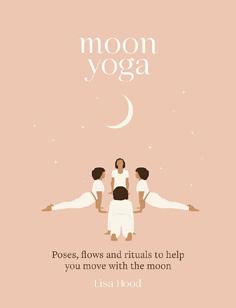
Go on a spiritual journey with yoga instructor Lisa Hood, and discover how to harness the moon’s energy for enhanced wellbeing. This beautifully illustrative and insightful guide is packed with yoga flows, journaling prompts, and affirmations for each phase of the lunar cycle.
The Reading List by Sara Nisha Adams (Out now)
Heart-warming and uplifting, The Reading List is a story of an unlikely friendship between a widower grieving the loss of his wife, and an anxious teenager trying to navigate life. Could a crumpled up list of books be the key to helping them find comfort in this next chapter of their lives?

Do some people really have a better shot at achieving their dreams than others? Can anyone be successful, or is it all down to luck? We’re exploring the truth about what it really takes to triumph
When you stop to think about success, what comes to mind? Highearning entrepreneurs, tech innovators, influential activists, bestselling authors? Success comes in many different forms, yet if we’re honest with ourselves, there are a lot of assumptions we make about how others become successful – and what’s holding us back from reaching the same heights.
Here, we’re putting some of the most common misconceptions about achievements under a microscope, to shine a spotlight on the true secrets of the successful.
Myth: Success means the same thing to everyone
In reality, there’s no single ‘look’ for success. Some people see success as having a big house or money in the bank. Others see it as how they impact the
environment, local communities, or give back to charity. Focus on what you value most, and how you define it, and strive for that.
Myth: Only certain personality types can succeed
You don’t have to be an aggressive extrovert to be successful –introverts can succeed, too! From sports star Michael Jordan to philanthropist Bill Gates, success can happen for any and all personality types.
Myth: Following your passion is enough to succeed
Unfortunately, passion alone isn’t enough. Loving what you do can be a great starting point, but taking things to the next level requires hard work, too. You need a 360 approach that allows you growth in various areas – from improving existing
skills or learning new ones, to understanding your market, and being open to feedback in order to see progress.
Myth: Success is dependent on your upbringing
Having a solid start in life can give you a big advantage. Knowing you have people to support you (financially or emotionally) makes a huge difference, giving you access to resources others may not have. Yet it’s not the only path to success. Oprah was born to a poor family, and is now worth an estimated $2.6 billion. Ed Sheeran, a big name in the music industry, dropped out of school and slept rough before making it big. Anything is possible.
Myth: You need luck to succeed Luck can give you a boost, but sitting back and waiting for >>>
something magic to happen rarely leads to success. Make your own luck by working hard and seeking out new opportunities.
Myth: You can’t succeed without stepping on other people
You don’t have to be ruthless, put others down, or take unearned credit to succeed. Focus, determination, confidence, and building a strong network that you can rely on (and that can trust you) is key.
Myth: You can make it overnight Overnight success stories may make great headlines, but they rarely reflect reality for the majority. Who wants to hear about someone’s 15 failed business ventures, when their 16th went viral? What we read about is often only the tip of the time, effort, and learning iceberg that led to their success.

Myth: Success is about having what everyone else wants Who doesn’t want others to look up to them? But the goal of success isn’t to make others jealous. It’s to achieve something – whether that’s financial security, giving back to your community, or creating something that helps others in some small way. Success isn’t stuff – it’s how we make a difference, and leave things just a little bit better than how we found them.
Myth: Successful people never make mistakes
We all make mistakes. Big ones, small ones, life-changing ones, forgettable ones. Successful people make just as many as the rest of us. But they make sure to learn from them, and find new ways to move forward.
1 Define what success looks like to you. What is it that you want to achieve – in life, in your career, as a whole? Take time to consider what you value, what you want from life, and how you want to measure your success. This can help guide you towards making attainable milestones, bigger goals, and prioritising what to focus on now, and in the future.
2 Focus on the journey, not the destination. Success isn’t a destination that you can reach. It’s a process, born from working hard, making improvements, and striving to do more. Once you lose momentum, you risk faltering, and undoing that hard-won progress.
3 Work together to achieve more. Few people can go it alone, and you can only learn so much by reading up on your industry. Trying to do everything on your own, and holding all the responsibilities on your shoulders, can slow your
progress and increase frustration. Many successful people have worked with a coach or mentor, which can be a great next step to help turn your ideas and dreams into a navigable pathway.
4 Consistency is key. Little and often can be a beneficial approach. Spending 30 minutes a day trying to improve will see more sustainable change over time, than waiting to have a whole afternoon or day free. Putting out smaller, regular updates will build brand awareness more consistently than one big push. Keep showing up, keep putting in the effort, and you will start to see improvements.
5 Don’t get caught up in the future – enjoy the moment. Looking to the future and anticipating problems can be helpful, but when you constantly focus on what’s next, you can forget to live in the present. Take time to enjoy the moment, celebrate your successes, and appreciate the progress you have made.
Success isn’t stuff – it’s how we make a difference, and leave things better than we found them
6 Start now – don’t wait for perfection.

The best time to start was yesterday. The next best time is now. We can wait forever for the ‘right time’ to begin our journey to success, but what if there is no perfect time? Once you have got started, all you can do is improve.
7 Remind yourself: success is about happiness, not money. Success is about a sense of purpose, satisfaction, and
progress. Money isn’t the benchmark of your triumphs. Focus on making good choices, and the rest will follow.
8 Play to your strengths. Knowing what you are good at is a great starting point, but don’t be afraid to expand your knowledge to areas outside of your comfort zone. And remember, you can always work together with others to fill any gaps in your experience, too.

9 It’s never too late. Success doesn’t have a cut-off point in your 20s or 30s. You may not discover your big dream until later in life, or circumstances may hold you back – and that’s OK. As long as you have the drive to try, you have the opportunity to succeed.

10 Remember: there’s life beyond success Success can give us a sense of purpose, but it’s not the only point of life. Just as only you can decide what is most important in your life, only you can decide where the benchmark for success is – and if it’s worth giving up everything else to achieve that. Ensuring you have balance is important. Take time to look after your relationships, focus on your wellbeing, and make sure life isn’t passing you by as you pursue your goals.
For more information on working with a success coach, visit the Life Coach Directory.


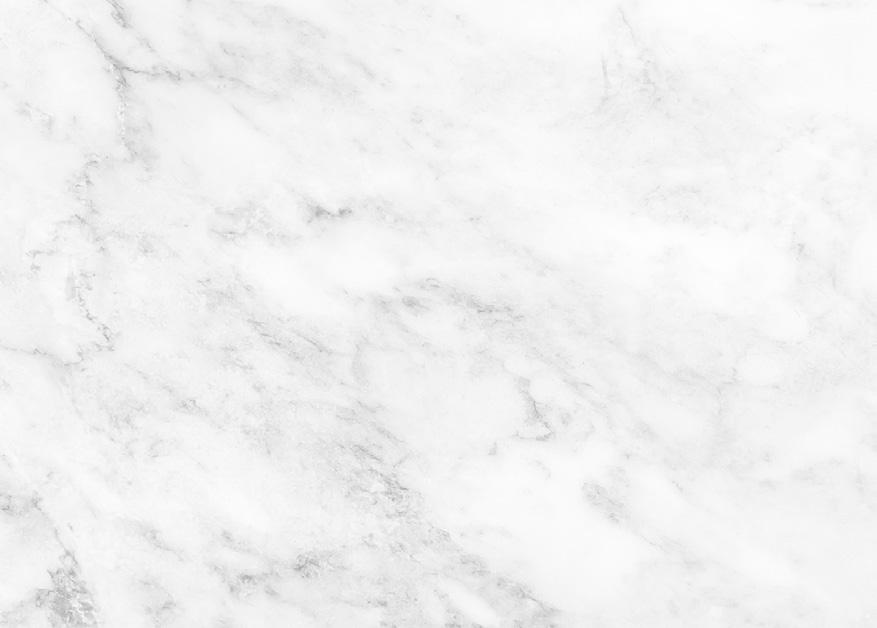
There’s a saying about friendships that goes something like this: ‘We have three types of friends: friends for a reason, friends for a season, and friends for a lifetime.’ Of course, there are no hard and fast rules about these sorts of things, but clearly, the sentiment resonates. So let’s talk about it. Specifically, let’s talk about perhaps the trickiest one: friends for a season. The idea behind this is that some friends are right for a period of our life. Maybe it’s for months, maybe years, but there’s a beginning and an end to the relationship.
And, apparently, it’s not an uncommon experience. According to a UK poll by Disney, the average friendship lasts for 17 years. Another study from researchers from Aalto University in Finland, and the University of
Oxford, took a look at the ways that friendships evolve throughout our lives. In order to do so, they reviewed data from three million phone users to identify the frequency and patterns of who they were contacting, and when, as well as overall activity within their networks. What they found was that men and women tended to make more friends –being ‘socially promiscuous’ – up until the age of 25. After that, the researchers saw a drop in the number of friends people had.
Many of us will go through life entering different eras – school, work, university, moving away, starting a family, changing jobs, picking up new interests – we evolve with time, and sometimes the friendships that were so valuable to us are not, or cannot be, fulfilling. Sometimes they end with a confrontation, sometimes >>>
they just quietly fade away. Either way, the end of a friendship isn’t something we’re overly accustomed to, making them difficult to deal with. But we have some advice to help you navigate these times.

Is there a right way to end a friendship?
Yes, and also no. If a friendship just fizzles out over time, with no ill-wishes, perhaps simply because you’ve become different people with different priorities, and there are no burning questions or unfulfilled needs from either party, then there’s not necessarily anything wrong with just letting it be.
But when it comes to ending a friendship that has turned
sour – perhaps because they overstep your new boundaries, or a change in priorities or lifestyle has caused disagreements – you may need to take a more direct approach.

The same rules for confrontation that apply to romantic relationships work here. Try to approach the person when you are not at the height of your emotions, so you can remain calm. Use ‘I’ statements to express how you feel – for example, ‘I feel like my boundaries are not being respected,’ rather than ‘You always cross the line.’ You can go into detail if you need to, and be willing to answer questions if
you can. But if the conversation turns hostile or aggressive, know that you’re under no obligation to remain in it. And then, like with a romantic relationship, make it clear what you want to do next, for example: ‘I think it would be best if we didn’t see each other anymore.’
Actually, it can be a big deal. “The ending of an important friendship can feel devastating, but the impact isn’t as widely recognised as it could be,” says life coach Henrietta Bond.
“Tell your manager that your partner has just finished the relationship, and they’re likely to suggest you take a few days off. Tell this same person that your best friend has just said that the friendship is over, and they’ll probably respond with sympathy, but they won’t be suggesting compassionate leave.”
Likely stemming from society’s tunnel vision towards an idea of ‘the one’, many of us have a tendency to place romantic relationships on an entirely different level from friendships. And yes, they are different, but they can also be equally important and fulfilling, in their own ways.

“Recognise this event for what it is: a major loss in your life,” Henrietta says. “Even if you’re the one who has ended the friendship – for whatever reason – it’s still going to have a huge impact on you. In many ways, it’s not so different from a bereavement, and you need time to mourn what has been lost.”
Maybe friendship breakups take us back to playground squabbles, and that’s another reason why we tend to push the associated feelings to one side. But when we do that, we never really deal with them, and those feelings can morph into bigger things,

or leave unresolved questions lurking at the back of our minds.
“Just the same as with any other type of major loss, you need to take very good care of yourself,” Henrietta says. “Other friends, your partner, or relatives may want to cheer you up, but you do need space to feel your feelings and grieve for what is gone.

“Be very kind to yourself while you are adjusting to the massive gap in your life your friend has left. And use that time to be your own best friend – asking your mind and body what they need at this painful time. If you want to curl up under the duvet and howl, then that’s OK. If you want to sit in front of the TV, eat pizza and ice cream, and cry over all the films you and your friend watched together, that’s also OK.”
That said, Henrietta finishes with a note that there are no ‘normals’ when it comes to adjusting to the loss. The way you do it may look entirely different to what’s described here. The only thing to make sure of is that you’re making progress with your grief, and that, once the initial aftermath is over, it isn’t preventing you from going about your day-to-day. If that is the case, it might be time to reach out to a mental health professional.
The dawning of a new season
Once the heartbreak has gone, and our lives have moved forward
down their natural courses, we might be able to turn back and look at our seasonal friendships with a kind eye. When you needed each other, you both were there, and they were likely to be the right person for that time.
Things don’t have to last forever in order for them to be valuable, to teach you new things, to bring you joy, and to serve their purpose. Friendships are complex things, but maybe we need to think of them on more simple terms. Maybe it’s time to add another saying to your collection: ‘To every thing there is a season.’ There is a right time for everything.
 Writing | Chloe Stephens
Writing | Chloe Stephens
Sleep is more than just a time for your body and mind to rest. During the night, your body rebuilds muscles you’ve worn down during the day and, according to a study by the National Institute of Neurological Disorders and Stroke, during deep sleep the brain’s glymphatic system cleans itself of toxins that accumulate while you’re awake. Sleep also plays a part in keeping your memories intact and regulating your emotions, not to mention the immune system and metabolism.
Could the root of a good night’s sleep start with how you begin your day?
Generally, good quality sleep happens when our behaviours align with our circadian rhythm – our 24-hour body clock that causes us to get sleepy at night and alert during the day. With that in mind, a great night’s sleep could begin with a simple set of morning rituals to create a better environment for sleep. So, where should we start?
It’s tricky for your body to get used to a healthy sleep routine if you constantly wake up at different times. So, decide on a wake-up time and stick with it, even at weekends when you could be tempted to sleep in.
A study from the American Academy of Sleep Medicine (AASM) shows that the minimum recommended sleep for healthy adults is seven hours a night. Decide on your ideal wake-up time, 7AM, for example, and figure out what time you should be aiming to be in bed. You can also try tracking your body’s natural rhythm, to see how much sleep you need to wake feeling rested.
Circadian rhythms are affected primarily by light and darkness, and are controlled by a small area in the middle of the brain. Wellmanaged light exposure can boost performance, as well as improve memory, energy levels, and mood. Undoubtedly, one of the best ways to wake up your brain and
maximise your energy is to get 20 minutes of sunlight first thing in the morning every day, to help promote wakefulness and suppress melatonin or sleepiness. If there is no sun available to you, or no natural light, get 20 minutes of artificial light – there are apps you can download that mimic sunlight, and digital alarm clocks that are designed to replicate a sunrise.
Most of us lose a whole litre overnight, so this is the next essential ritual to adopt. Drink your water soon after getting up to counteract dehydration from sleep. Dehydration can affect how you perform mentally and physically throughout the day, but also how well you sleep. And, even in its mildest form, dehydration can cause your sleep to become disrupted. So, drink up!
Many of us believe that our day just has to begin with tea or coffee. We rely on our morning
caffeine to wake up our bodies and prepare our minds. But would you believe me if I told you that you’d get more of an energy boost if you delayed that first caffeine hit for at least 90 minutes after waking?
If you drink caffeine while your cortisol (your body’s primary stress hormone, a bit like nature’s built-in alarm system) levels are still elevated, you’re introducing caffeine into your body when you could actually do without it, which can result in disrupting your cortisol’s natural flow. But if you delay for 90 minutes, the caffeine will kick in as your cortisol levels begin to reduce, just when you could use it the most.
Yes, making your bed really does promote better rest and sleep at night. A study by the National Sleep Foundation found a 19% difference in consistently getting a good night’s sleep between those who rarely or never make their bed, and those who make their bed every morning. Remember your daily behaviours affect your sleep at night, so think of these rituals as a way to bulletproof your sleep and energy. Consider taking 20 minutes to start your day with more intention; which rituals will you choose to test to gradually build your new routine?
Chloe Stephens is a self-love coach and mindset mentor.
From a podcast that will get you stomping outdoors to a photography technique that will light up the sky, try something new with our enriching suggestions
Volunteer at a Repair Cafe
Are you skilful at sewing, or handy at mending things, and want to put your skills to good use? Volunteer for a local repair cafe to help fix everyday items, such as electricals, bikes, clothes, furniture, and more. You’ll be helping people save money during a time of economic uncertainty and, in turn, contributing towards protecting the planet. (Visit repaircafe.org to find out more information)
Letter To My Younger Self: The Big Issue Presents... 100 Inspiring People on the Moments That Shaped Their Lives by Jane Graham and The Big Issue What one piece of advice would you give to your younger self? Interviewer Jane Graham conversed with well-known figures, from Paul McCartney to Olivia Colman, to ask them exactly that. The result? Letter

To My Younger Self – a collection of reflections and words of wisdom for when you need it most. (Out now, Bonnier Books, £9.99)
Paint a light picture
‘Stompcast with Dr Alex’ Go on a stomping journey with Dr Alex, as he takes you on a wander through the great outdoors and into the lives of each of his podcast guests. In each episode, Dr Alex meets a renowned podcast guest in an outdoor location of their choice and embarks on a walk, all while engaging in thought-provoking conversations about wellbeing and mental health. (Available on all podcast platforms)
Tamara Michael
Try your hand at long-exposure photography, and be mesmerised by the illuminated masterpiece that is captured through light painting. Simply place your camera on a tripod, set your camera to a long shutter speed, and use your torch to paint the sky with light. What are you waiting for? Grab your camera and watch the magic unfold. (Visit canon-europe.com to find out more)
Do you ever just feel instantly soothed from a racing mind after doodling? From a scribble to help you to self-regulate, to one designed to provide relief from phone anxiety, artist Tamara Michael has a doodling tutorial for every occasion. There’s a reason art therapy is so popular, so grab your pen and put it to the test. (Follow @tamaramichael_)

Do you ever have leftover soap ends that you don’t know what to do with? Instead of throwing them away, why not make a new bar of soap? Pop the shards in a pan of boiling water, mix well and strain, then pour into a mould to set. You can even get creative by adding in dried flowers or your favourite essential oil. (Visit youtube.com for tutorials)
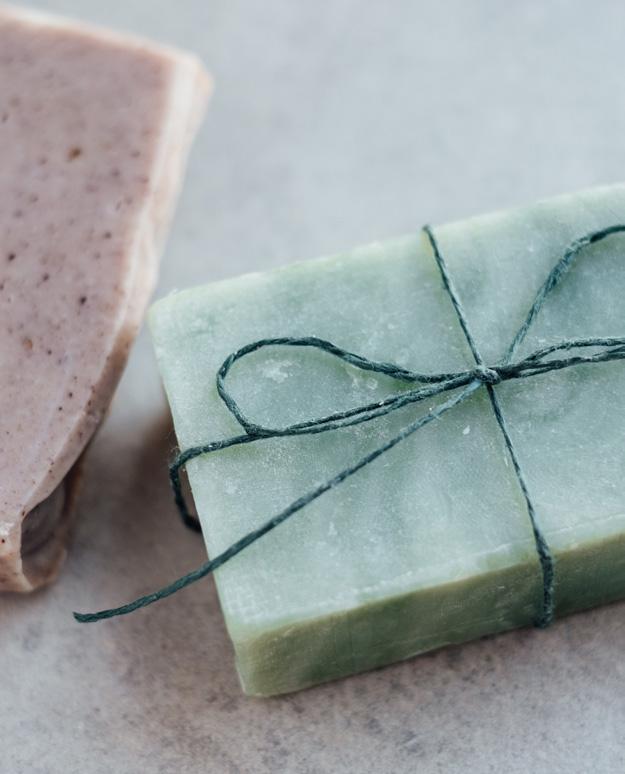
Do you have any household items lying around? Or maybe you have some food that might just go to waste? Join Olio to connect with your neighbours and local businesses in a community-led mission to tackle waste, and share more. You never know what gems you might uncover… (Available on the app store)
Try the 25-7-2 workout Struggling to find motivation for fitness? Head to the gym and give this simple yet effective workout a go! Climb on a StairMaster machine for 25 minutes at level 7 intensity, twice a week. This low-impact cardio is effective for building leg muscle strength and cardiovascular endurance, while going easy on your joints.
With the help of Headspace, you can now find peace of mind on your TV screen with this friendly, interactive Netflix series. Unwind Your Mind invites you to choose your own mindfulness adventure, with exercises designed to improve your sleep hygiene, to activities that will help you relieve stress and induce a sense of calm. Which wellness adventure will you choose? (Available to watch on Netflix)
What better gift is there than a statement necklace that improves your wellness at the same time? Handmade with love and care, flourish in the benefits of aromatherapy on the go with Kodes aromatherapy diffuser necklace. Simply add 1–2 drops of the complementary oil samples –Balance and Wild Orange – to the lava bead, and take in the aroma. (From £19 at kodes.me.uk)

For your chance to win, simply email your answer to the following question to competitions@happiful.com
Which of these oils is known as an antiseptic?
a) Rosemary b) Pine c) Tea tree
*Competition closes 28 February 2023. UK mainland and Northern Ireland only. T&Cs apply. Good luck!
A closer connection between those across the spectrum of life could hold some magnificent opportunities for all involved. Let’s explore the power of intergenerational living…
How many people do you regularly interact with who are of a different age to you, another generation? Now take away your close friends and family, does that change things?
In reality, apart from maybe someone we work with, or say hello to in the supermarket, many of us only have fleeting moments, rather than deep connections, with people of differing ages and stages of life. But, why is this so important? Diversity is critical to our wellbeing, offering new perspectives, insight, and even improving our creativity! And intergenerational relationships contribute greatly to this. They go far beyond befriending and volunteering, both of which are still beneficial, but encompass learning, laughing, teaching, supporting, and really experiencing life together.
With so many wide-ranging benefits of intergenerational relationships – socially, mentally, and emotionally – I’d like to
celebrate and share some of the ways that they can help you to thrive, and invite you to get involved, too.
One of the best ways to connect more deeply with other generations is by getting involved in your community –and learning from the range of characters you’ll meet there. Some incredible initiatives have launched over the years, including Food for Life which hosts local events, from cook-alongs to teaching people how to grow their own food, for people of all ages and backgrounds. Plus, the Eden Project organises a ‘month of community’ in June, inviting people to get together to celebrate friendship, food, and fun with their neighbours.
It doesn’t stop there though. We constantly hear about the care needs of older adults and issues of social isolation. But it’s become apparent, especially during the Covid-19 pandemic, that despite
young people having access to large social media channels, they suffer social isolation as much as older adults. Depression and anxiety are not confined to the young either.
The Office of National Statistics estimates that approximately 67 million people live in the UK, and that 18.6% are over the age of 65. By 2041, that figure is set to increase to 26%. At the same time, the increasing cost of living, and various other challenges, means that larger numbers of young people are still living at home. Could there be a way for these parties to support one another, and address the issues of loneliness at the same time?
If we see age merely as a differentiator, we’re pigeonholing ourselves. It doesn’t fit the 70-year-old motorcyclist or gig-goer, or the teenage baking or cross-stitch enthusiast. It simply gets us trapped in stereotypes, and limits our opportunities to connect – but it doesn’t have to be that way.





Drawing together different groups in society has a wealth of benefits, which initiatives like Care Home FaNs are making the most of. This social action project provides opportunities for youngsters and school-aged children to spend quality time with older people living in care >>>

What stands out is the commonality of life and an interest in another human being, which goes far beyond the age differentiator
homes, engaging in activities such as storytelling, digital media, and horticulture. With 4,000 people currently taking part, and each project lasting up to 18 months to establish deeper links, it certainly seems that everyone is appreciating the benefits of these new connections.
But intergenerational relationships aren’t exclusive to projects – they can truly be found anywhere. I recently had the pleasure of speaking with Angela, who is in her 70s, who has enjoyed a close friendship with her former colleague Eve, which has spanned more than 20 years. Despite Eve being 15 years her junior, and life taking them in different directions, during these latter years, their friendship has really deepened.
Where once work or children bonded the pair, Angela and Eve now provide a listening ear for one another, enjoy dog walking, and even share sourdough bread. In some ways, Angela provides a mothering presence for her friend whose extended family are not close geographically, and Angela’s younger friend is always there for her.
Eve also reveals that she volunteers as a befriender for two women in their 90s, and gains as much as she gives with these experiences. She enjoys hearing about the women’s lives,

their shared interests in singing, music, food, animals, and gardening, but the beauty is in simply having a chit-chat. What stands out from these accounts is the commonality of life and an interest in another human being, which goes far beyond the age differentiator.
Professors Timothy Brubaker and Ellie Brubaker conducted a study on intergenerational relationships which reiterates the

Intergenerational living is now recognised as a successful strategy for developing effective communities, and addressing society’s wider health agendas
similarities in values of human experience, above the things that differentiate us, such as age. They found that intergenerational relationships are enhanced when they exhibit the four Rs: respect, responsibility, reciprocity, and resilience.
While, initially, it might feel as though the young and older generations don’t have that much in common, it’s believed that through spending time together, the young will come to value the elder’s life experience, and as relationships evolve there’s a lesser sense of obligation or caregiving. Instead, responsibility becomes an appreciative, shared value. This strengthens relationships at all levels, and through the changing dynamics and stages of life. So, how do we take the next steps and make intergenerational living a common practice in modern life? Well, actually, many cultures around the world already do. Often grandparents might live on one floor, or in an annex, or next door to their children and grandchildren. But there are also initiatives to help those unable, or without family, to live in close quarters. Share My Home (sharemyhome.co.uk) matches older people with a room to spare with “compatible companions”, who pledge time
each week to help around the home, and enjoy each others’ company – improving the quality of life for all.
Intergenerational living is now recognised as a successful strategy for developing effective communities, and addressing society’s wider health agendas. Some local authorities, supported by innovative designers, community groups, and the public, are making inventive responses to the way our societies are actually built in the first place.
The Tullkammarkajen project in Halmstad, Sweden, was specifically designed to consider shared living for people of different stages of life. Providing access for both disabled and non-disabled people, their designs incorporate areas for communal eating, sharing social activities, and taking part in horticulture. They even integrate a kindergarten in the midst of the housing projects.
Closer to home, Matter Architecture, a London based firm, are working with partners to establish housing that “supports and enables participation and sharing amongst residents of all ages”. Their designs show integrated housing with open spaces and wheelchair accessible platforms,
among green spaces for people of all ages to enjoy.
These schemes greatly support young parents struggling with childcare. They also give hope to young adults juggling jobs, and struggling to get into the housing market, as well as isolated elders wanting to be more involved in the community. They break down stereotypes and deepen understanding between people.
• United for all Ages is a social enterprise supporting centres around the UK where people of all ages can meet to chat, as well as take part in activities and sports together (unitedforallages. com/campaign).
• Reengage holds regular tea parties for which they often need hosts (reengage.org.uk).
• The Together Project holds singing classes called ‘songs and smiles’ (thetogetherproject.org.uk).
Whether your curiosity is piqued by one of these projects, or you have your own creative ideas in mind, know that simply reaching out and speaking to someone of a different age or stage is a great place to start. As Gertrude Stein said: “We are always the same age inside.”
Knowing how to nourish and support your body throughout your menstrual cycle could make the world of difference. Here, expert columnist Claudine Thornhill reveals how you can go with the natural flow of yours
Many aspects of a woman’s life are defined by cycles; nothing more so than her menstrual cycle. While the menstrual cycle can range from anywhere between every 21 to 35 days, there’s also a cycle within it, which, much like the moon phases and the seasons, is split into four phases. Many people have seen and felt the benefits of living and eating in sync with the natural rhythm of their cycles – want to try for yourself? Here I’ll break down why and how to do it.
Assuming day one is the first day of your period, this phase happens on days one through five of the cycle. Many will experience low energy and a decrease in motivation around this time due low oestrogen and progesterone.
To replenish the body, mineralrich foods such as bone broths, red meat, and seafood for iron and zinc, along with comforting foods
like soups and stews, are helpful. Since ginger is antispasmodic, ginger tea can be a helpful pain reliever for those with cramps.
Don’t be too hard on yourself if you’re not like that woman in the commercials who is happily cycling through lush green fields at this time. Gentle movement such as walking, light weight training, yoga, or pilates is preferable to anything too strenuous or high energy.
This phase includes the menstrual phase through to ovulation.
Diet-wise, women can consume iron and magnesium-rich green vegetables, such as spring greens, cabbage, kale, and Brussels sprouts. Vitamin C foods, such as lemons, oranges, and limes, support detoxification and increase the absorption of iron foods, while nettle tea supports hormone balance. Eggs and lean protein will support egg quality, and fermented foods such as tempeh, kimchi, yoghurt, and
Claudine is a naturopathic nutritionist and health coach. Find out more by visiting the Nutritionist Resource.

miso will provide gut-supporting probiotics.
Once menstruation is over, energy starts to rise and cardio, as well as weight training with heavier weights feels more doable, and since this period leads up to ovulation, a time when a woman is most fertile, it is an ideal time to connect with our creativity, whether it be singing, dancing, or trying something new to move the body in different ways.
This is a brief period of three to five days around the middle of the cycle. Generally, your energy (and libido) will be its highest during this phase.
During both the follicular and ovulatory phases, oestrogen is rising and there may be a desire to eat lighter and leaner foods. Nutrient-dense raw fruits and veggies will provide fibre, and continuing to eat fermented foods will support gut health, which is essential for menstrual health. Avocados, salmon, and chia seeds provide the healthy fats required to balance hormones. At this phase, light grains such as quinoa and couscous are preferred over dense carbs.
Since energy is at its peak at this time, this is the moment to get those high intensity and cardio workouts in, which will also help to balance oestrogen levels.
It’s worth mentioning a study that found people were more prone to injury during the late follicular and ovulatory stages of their cycle, possibly due to ligaments being more lax in preparation for pregnancy. Mobility exercises, warming up, being mindful of form, and not overextending are key ways to avoid injury.

Seed cycling can help to promote balanced hormones, supporting the body to adjust to hormone changes during the cycle. To seed cycle, consume:
• 1–2 tablespoons of ground flax and pumpkin seeds per day during the follicular phase
• 1–2 tablespoons of ground sunflower and sesame seeds per day during the luteal phase
Add the seeds to smoothies, porridge, yoghurt, hummus, or use them to make protein balls.
In the phase after ovulation, and leading up to menstruation, the rise of progesterone causes an increase in appetite. Eating more regularly and including dense carbohydrates such as rice, potatoes, and butternut squash, alongside protein, will help to reduce PMS symptoms.
Starting to include iron and zincrich foods will help to replenish stores lost during the period.
Moving slowly and gently is ideal during this phase. Studies have shown that fatigue can set in quicker, and that endurance can be compromised in the luteal phase. Listening to your body and focusing on either recovery or light, low impact activity like yoga or swimming, is ideal.
Whether it’s a meeting at work or a family dynamic that conjures up concern around the possibility of clashes, here are five powerful ways you can proactively manage tough conversations and situations
Writing | Lucy DonoughueIt’s easy to talk ourselves into fearing a situation, and expecting the worst, even when we have no evidence that things will play out as we imagine. However, by catastrophising and anticipating conflict we’re telling ourselves that we’re about to be in danger, and our mind and body will then react as if that is true.
Intercept anticipatory negative thoughts as they enter your mind by asking yourself: ‘Do I know this to be true?’ If the answer is no, ask yourself how you would like the conversation or event to play out instead.
You can’t manage how other people will communicate or react, but you can present yourself in a way that you are proud of. By writing down how you will behave and communicate, you’re setting positive intentions that will help you manage your interactions. Read through your intentions again before your meet-up, so they’re fresh in your mind.
You can’t manage how other people will communicate or react, but you can present yourself in a way that you are proud of

To counter the effects of climate change takes a great deal of tenacity, and thinking outside the proverbial box. But, fortunately, there are some astounding people and companies demonstrating the creativity, brilliance, and ingenuity required to face this challenge.
Here, we’re marvelling at five eco innovations, looking to reduce or reverse human beings’ impact on the world around us. From stepping up our survival instincts to agricultural advances, feel inspired and get curious about what other possibilities might be on the horizon for green technology…
Call it awe-inspiring, call it a ‘breath of fresh air’... AirCarbon is an award-winning invention, created by Newlight Technologies, that is a carbon-negative, renewable form of ‘plastic’. Not only does it not produce the typical emissions and waste that come with plastic production, but it actually cleans the air instead!
With an estimated 400 million tons of plastic waste produced annually around the world, the clever creation combats this by combining air with methane-based carbon. The end result is completely natural, meaning it can be broken down by microorganisms to provide nutrients, plus it’s been FDAapproved so it is safe to come into contact with food – offering a host of possibilities for replacing traditional plastic packaging and containers.
One of the largest polluting sectors worldwide is construction – with research by the US Green Building Council claiming the industry is responsible for 40% of worldwide energy usage, and another report suggesting it’s accountable for up to 50% of climate change.
Clearly, something needs to change. And offering the cornerstone to build a more environmentally friendly future is the possibilities of 3D printing. With several companies already
exploring the potential of ‘additive manufacturing’, as it’s also known, the real advantage is the ability to use local materials in the printing, such as soil, clay, sand, and plant fibres, drastically cutting down the need to transport materials (potentially by 95%), and avoiding the use of cement. Having the printer on site also means constructors only need to print the exact materials required, encouraging less waste.
Partnering positivity for the environment, with doing good for people too, charity Habitat for Humanity utilised this technology to build a 3D printed home in Virginia in 2021, to house lowincome families who volunteer with them. Incredibly, the twobed bungalow was printed in
just 12 hours, demonstrating the ability to produce eco-friendly, affordable homes in a much more time-effective manner.
With the ever-increasing global population, as well as climate change impacting the success of a harvest, demand on agriculture is increasing in turn. But farmers are taking things to the next level, literally, by stacking crops in pillars, enabling them to radically increase their yield for the same square footage – potentially up to 10 times the normal amount for the same space.
What is so different about these farms is that they are built in enclosed spaces, roughly the size of a large supermarket. And being indoors, with artificial LED lights and water recycling, means farmers aren’t at the mercy of
Mother Nature, instead having control of the length of each day, and even season, themselves. Plus, the clean, contained environment is free from bugs, making pesticides redundant. Taking this concept and really running with it, plans are in place to build the world’s largest vertical farm in Gloucestershire, which will be comparable in size to stacking 96 tennis courts on top of one another! The Jones Food Company, which is behind the farm, estimates that within 10 years, it could produce enough crops for the UK to eliminate the need to import any soft fruit, herbs, or salad.
As the world feels the impact of climate change, urgently responding to disasters is of paramount importance – but
how can we accurately predict and prepare relief when there’s so much complicated, messy data to explore?
Artificial intelligence might just hold the solution. Governments and relief organisations can use AI to review vast amounts of data more efficiently and effectively than humans can. This can allow them to coordinate emergency responses to disasters, ranging from the ever-increasing number of floods, to hurricanes, earthquakes, and tsunamis, and in future, may even help to predict the most successful survival strategies.

Mimicking the act of birds naturally spreading seeds over land, Dendra Systems, based in the UK, is accelerating this process through the use of drone technology. In fact, its system not only speeds up and maximises how many seeds can be scattered to help reforestation, but it increases efficiency, by using tech to know which seeds will thrive in specific areas and conditions – and tracking the exact planting location to allow ongoing monitoring of the reforestation efforts.
With each drone able to cover a huge expanse of land per day – 60 hectares to be precise – and carry 700kg of seeds, in 50 different types to establish biodiversity, the scalability of these efforts is phenomenal. Plus, due to the aerial delivery, the drones ensure that all land is utilised effectively, even if it’s difficult to access by traditional means, perhaps due to inclines or being more rugged.

Crying does not indicate that you are weak. Since birth, it has always been a sign that you are alive
From dispelling myths about motherhood and revealing the postnatal pressure on parents, to sharing the sanctity of self-care, bestselling author, podcaster, and actress Giovanna Fletcher has been a comforting voice of support for years. And now she’s embarking on a new challenge, following her passions and finding herself centre stage…
Since Giovanna Fletcher launched her hit podcast, ‘Happy Mum, Happy Baby’, a wealth of celebrity guests, from the Princess of Wales to Fearne Cotton, have joined her for openhearted and fearlessly frank conversations about parenthood.
Based on her bestselling book of the same name, the podcast, which boasts more than 20 million downloads, aims, says Giovanna, to help new mums “feel better about themselves” – something made possible by her own natural warmth and openness about her experience of raising her sons Buzz, 8, Buddy, 6, and Max, 4.
And Giovanna has no plans to take a breather from podcasting, because she understands that for some women, her support could mean the difference between life and death.
“The leading cause of death in new mums within the first postnatal year is suicide,” says Giovanna. “Well, let’s have those chats, let’s get people talking so they know they’re not on their own, let’s be that hand in the dark for people when they feel like they aren’t valued and not enough, because they absolutely are enough.
“The more that we can dispel the myth that there’s a right way to do motherhood and that you can fail in it, the better.”
Speaking from her new home in Hertfordshire, against a backdrop of framed pictures including one, which reads ‘Yo Mama You’ve Got This’, Giovanna makes no secret of the fact that, at times, juggling a busy, evolving career and raising her boys with her McFly musician partner, Tom Fletcher, can feel overwhelming, but she says organisation is her key to “self-care” because it avoids her
“flapping” around in the morning. Vitally, she accepts that occasional mistakes are par for the course.
“Angela Scanlon once told me that we’ve all got balls flying in the air. Some are glass, and some are plastic. We have to keep the glass balls in the air because they’re precious – that’s family –but we have to allow the plastic balls to drop every now and then,” says Giovanna.
“I’ll let the class WhatsApp slide for a week and then have an ‘Oh my gosh, what’s going on? What have I forgotten? Sorry kids!’ moment.”
Numerous studies show that in heterosexual relationships, women are responsible for the lion’s share of childcare and housework, and perform far more cognitive and emotional labour than men. Research from Arizona State University also reveals that almost 90% of mothers in committed partnerships say >>>
this responsibility leaves them feeling overwhelmed, exhausted, and unable to make space for self-care.
“Hand over some of that responsibility, and know it’s OK if [your partner] does it in a different way to you,” advises Giovanna. “If we can not be so precious about getting it all done, it alleviates that weight on us. A problem is only your problem if you don’t share it. Being a mum and running the house, you
have to vocalise what you need, otherwise you’re just stomping around and resenting everything. You don’t have to live like that.”
With Max now in school, and all the kids running busy schedules – “They’re out at 8am, they come back at 4pm or 5pm, depending if they’ve got an after-school club” – Giovanna has acquired more balance, and now works more concentrated daytime hours, rather than logging on after the kids’ bedtime.
“I am really keen on boundaries now,” she says, explaining how a lockdown-born Lego hobby (“I’m currently building a Disney castle”) is now her preferred way to spend an evening.
“Lockdown showed us that we have to make time for things that help our minds, and when I’m doing Lego, I can’t really take in anything else. There’s something about building something, seeing how it fits together and works, and you don’t have to think because a manual tells you exactly what to do.”
Reward in equal measure comes from utilising the acting skills she honed at London’s Sylvia Young Theatre School, where she met Tom at the age of 13 (and where he proposed amidst a carpet of candles in 2011), then south London’s Rose Bruford College of Theatre and Performance.
Giovanna, who grew up in Ingatestone, Essex, appeared alongside Marcus Brigstocke in 2001 TV drama The Savages, and was cast in the 2009 film The Boat That Rocked. Then, last January,

Let’s be that hand in the dark for people when they feel like they aren’t valued and not enough, because they absolutely are enoughPhotography | Rachell Smith
after five years off stage, she was the lead in 2:22, a supernatural thriller play in the West End. From this month until mid April, Giovanna is in the world premiere stage adaptation of Wish You Were Dead, based on the novel by bestselling British crime writer Peter James.
“It’s lovely to be using those skills in the way that I originally planned. I love the live aspect of theatre. Anything can happen, no two nights are the same,” she says. And appearing up close and personal before a live audience inspires a sense of vulnerability.
“I feel sick every night before I go on stage, but I think that’s good. It’s healthy. It would be more worrying if that wasn’t there. I feel nervous before every podcast recording, before everything I do, because I just want everything to go well.”
As well as taking stock of the advice she gives her boys whenever one feels anxious – “See nerves as excitement, try to channel it and rebrand it” – Giovanna uses various peace-enhancing rituals to calm her during times of emotional unease, including using “a little bit of Rescue Remedy”, doing vocal warm ups, and listening to music by rock band The xx.
Just like 2:22, the adult nature of Wish You Were Dead means it is, explains Giovanna, “another thing the boys won’t be able to come and see mummy do”, and during her 10-week leg of the show’s five-month UK tour she also won’t be doing school
drop-off and pick-up every day, because “that’s the reality of theatre”.
Still, she gets comfort from knowing her children understand she is “off doing the things that I love”, which also applies to visiting far-flung destinations to embark on gruelling challenges
as patron for breast cancer awareness charity CoppaFeel!
In November, Giovanna returned from a 100km trek across the Sahara Desert alongside 100 CoppaFeel! supporters and celebrities, including her pal Kelsey Parker, whose husband, The Wanted star Tom, died 10 months ago following an 18-month battle with brain cancer.
“When you’re doing an activity and talking, barriers come down,” says Giovanna. “Whether you’re walking with people who have had a breast cancer diagnosis, who are mid-treatment, or have no connection to breast cancer whatsoever. I feel so privileged to get a week to walk and talk. It’s a great form of therapy.
“Grief is still a taboo in this country, and one thing Kelsey really loved about the treks was being able to have those conversations with people within the cancer community, and not feel people are treading on eggshells.”
This year, Giovanna is embarking on two more challenges, releasing another book, throwing her all into her new stage role, and working hard at her biggest job of all – being mum. Might there be room for one more at Fletcher HQ?


Giovanna smiles. “I feel so grateful to have our three children, and my heart is full. But I think the shop is shut!”
‘Wish You Were Dead’ is touring across the UK from 16 February until 29 July. For tickets and venues visit peterjames.com
The more that we can dispel the myth that there’s a right way to do motherhood and that you can fail in it, the better
Sometimes, making it to Friday can feel like a real challenge, with anxiety and stress occupying our minds – bringing down our mood, and draining our resilience. When we do eventually get to the weekend, it can be easy to use it as a time to catch up on all the things we were too overwhelmed to do during the week and then, before we know it, it’s Monday, and the cycle starts all over again before we’ve had time to catch our breath.
So, if you’ve had a full-on week, your stress levels are peaking, and you’re struggling with anxiety, we’ve got some suggestions for ways you can make each weekend one dedicated to rest and rejuvenation.
When daily life gets too much, escape the toil with the power of stories. If you’re a reader, this may be the time to curl up with the book that’s been sitting in
your to-read pile for a while. Or if films are more your thing, settle down with a warm drink and spend the next couple of hours in a whole new world.
When deciding on how to pass your time, it might be worth considering exactly what you need from this activity. Are you looking for a good laugh? An inspirational message? A drop of nostalgia? Or total escapism into a fantasy world?
Whatever you go for, bring some mindfulness into it. If you notice
Address the stress of the week with these entertaining endeavours to help you soothe anxiety over the weekend
that your attention is starting to wander, prompting that anxiety to creep back in, try to recognise those thoughts, let them go, and bring your focus back to the film or book you’re absorbing.
You won’t need your passport for this one, because even a trip half an hour down the road will do. Stuck in our routines, we can end up going between the same places again and again. Going off and discovering somewhere new breaks those daily patterns that can, sometimes, bring us so much anxiety.
What’s more, we also get that sense of adventure and discovery, something that we adults tend to do less of as we settle down. If you’re near the coast, finding a new seaside spot has the added benefit of ‘blue therapy’ – which refers to the soothing feeling we feel when next to large bodies of water. But those of us who are landlocked still have so much to gain from natural spaces such as forests and dales. Or, visit the next town over. Trawl for treasures in charity shops, find yourself a warm, cosy coffee shop, and there are always unexpected, quirky delights to be found in local museums.
Self-care is something that is spoken about a lot in health and wellness communities. And you might have a good idea of the basics (making nourishing food, taking a relaxing bath, journaling), but now might be a good time to learn some new techniques like self-massage, ‘morning pages’, relaxing yoga routines, or even birdwatching. For more suggestions, head over to happiful.com and search ‘self-care’.
Sadly, as much as we might wish it, household chores don’t halt when we need a break. But if you do need to get things done this weekend, see whether you can shake things up.
Firstly, have a stern look at your to-do list. You might also want to consider if some things can wait till you’re feeling more energised – for example, alright, the washing-up does really have to be done, but mowing the lawn? That can wait.
If you have other people in your household, and they can help out, sit down, have a chat, and see whether you can delegate some of the things that you would normally take on.
You should try to be honest, explaining how you’re currently feeling, letting them know you need to lean on others for a bit more support at the moment, and that their help would really make a difference.
Above all else, make joy a priority – see our article on p25 for a more in-depth look at this. We all go through times when we feel immense pressure, we have worries that stop us from sleeping, nagging moments of insecurity, fears, and unrest. So, what makes you the happiest?
Time spent with your loved ones? Is it quietly working on your hobbies? Maybe turning up your favourite album, singing along and dancing like nobody’s watching? Getting outdoors?
Whatever it is, even if it’s only for a short time, even if it’s a little inconvenient, make sure you make space for joy. Because you deserve it, you really do.



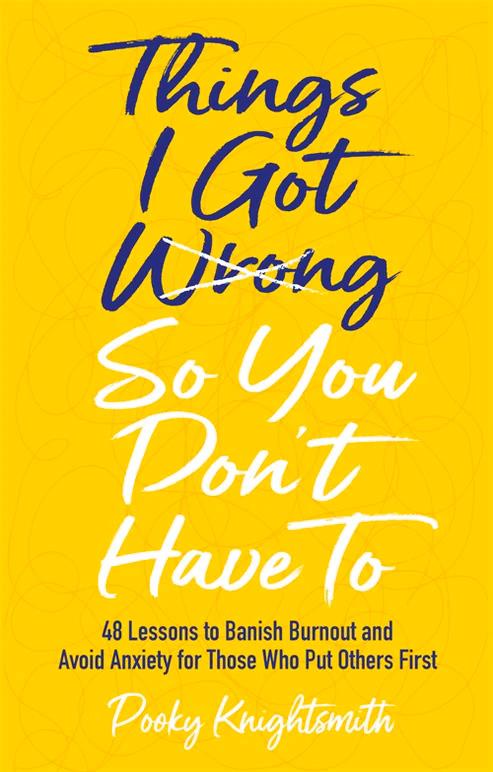


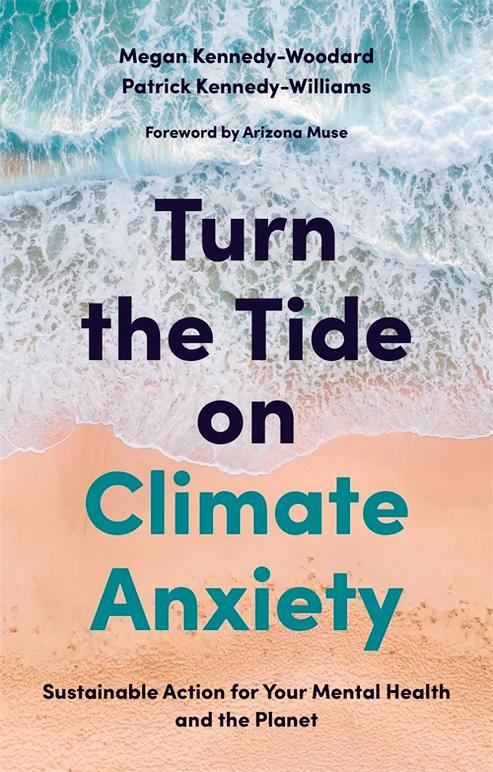



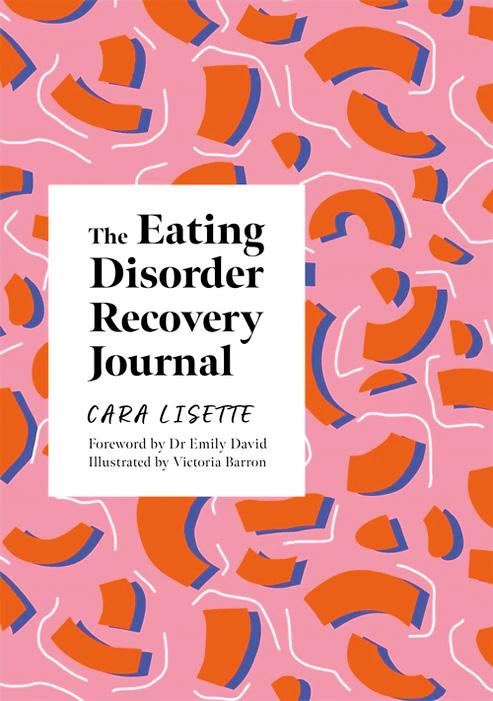
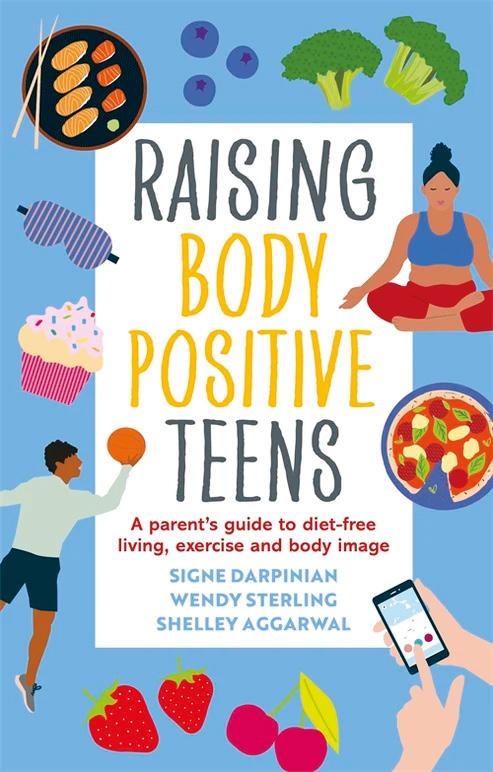












As human beings, the need for social connection is hard-wired into our brains, so it’s no wonder that most people place huge importance on being liked. It’s a normal, healthy response to value relationships with others, and what they think of you.
As therapist Kara Nassour points out: “It’s in our genetic makeup to need approval from others. Throughout history, humans have survived cooperatively, and being expelled from your community
would usually lead to death. Even today, our brains process social rejection in the same way as physical threats, and try to protect us by making us pay attention to other people’s opinions of us.”
However, in our modern society, life is not so simple, and sometimes the desire to be liked can manifest in unhealthy ways, getting in the way of goals and dreams, and using up precious energy that could be spent elsewhere. Many of us were brought up to be ‘people-
pleasers’, to think of others not ourselves. While this has its benefits, taken to an extreme we can lose touch with what our own needs and interests are. It can stop us from knowing ourselves. Ultimately it’s when we nurture ourselves, and ‘put on our own oxygen mask’ first, that we can be better resourced to care for others. Counter-intuitively, we need to liberate ourselves from the need to be liked by everyone in order to fully show up in our relationship with ourselves, and others. >>>
Our natural desire to get on with others is no bad thing, but what happens when people-pleasing starts to hold you back?
So how can we do that? Here are some essential ideas to help you break free from the peoplepleasing cycle.

What do you want in life? Are there any areas where needing to be liked is holding you back? Perhaps you want to launch a new business, but are nervous about promoting yourself on social media, or handing in your notice to a job you’ve worked in for years.



It’s in our genetic makeup to need approval from others
Here’s a simple exercise to explore what you really want to do, and who you really want to be:
1. Write the ‘naughty’ version of yourself. Don’t hold back. What would you do, who would you be, if you could be free of worrying about what people will say? Exaggerate and really go for it, even if the persona you create is someone you’d never actually be in real life. This can really help to get liberated from your conventional, everyday self and any expectations of others.
2. Read back over what you have written, and look at it more realistically. Some of what you have might be completely wild and unobtainable, but you may find that there are some dreams and goals that you could really go for. Is it possible that other people’s potential reactions are holding you back? Is there anything you can do to take a step towards your goal? Journal your thoughts.
What’s the worst thing that could happen?
Try this writing exercise to explore what you’re afraid of. If you take steps towards a dream or goal,
what’s the worst thing that can happen? What are you afraid of? What’s holding you back?
Many of our motivations and fears relate to something that has happened in the past. Perhaps the response of school friendships, or the need for approval from a parent or older sibling.
It can be helpful to talk this over with a therapist, or journal any thoughts. Spending some time exploring and letting go of feelings from the past can help untangle things, so you can make a new choice in the present.
Being who you want to be can invite new, authentic friendships to blossom, based on your own values and who you really are. If you find that you don’t have much in common with the people around you, it may be a sign that new friendships may be waiting for you if you can let go of the desire to be adored by everyone. Therapist Kara Nassour stresses that it’s important we don’t try to live without caring about people’s opinions completely. After all, that goes against our nature as human beings. Instead, she says:
“Think about whose opinions are worth caring about. Who are the people you admire and want to emulate? Who are the people who like you for who you are? Flip the script: not everyone you meet is worth trying to please. They have to prove they’re worth your attention, too.”
Try this journaling exercise. Write down a description of your ideal friend. What attributes would they have? How would they react to the choices and changes in your life? Would they cheer you on, and offer positive encouragement? Write a description of your ideal cheerleader friend, and imagine how it would feel to have someone like that in your life.
Sometimes our fears and concerns about how people will react to us are based on very real experiences with them. At other times, the fears may be unfounded, and based more on our own past experiences, and our worries that history will repeat itself.
It’s good to remember that people might not react in the ways you’ve feared, and even if they do, you don’t have to let that stop you.
If you have a dream or goal that seems ‘stuck’ and isn’t moving forward, it might be worth asking yourself if other people’s reactions could be holding you back. Recognising this can be key to letting go of the need for other people’s approval, or fear or disapproval, and living the life you’ve always wanted.
Not everyone you meet is worth trying to please. They have to prove they’re worth your attention, too

Crying does not indicate that you are weak. Since birth, it has always been a sign that you are alive
Rumours about aphrodisiac foods have been around for years, but can chillies really spice up your sex life? And will oysters help heat things up or leave you with a bad aftertaste? We’re setting the record straight…
When it comes to setting and getting ‘in the mood’, some foods have become more popular than others –known as aphrodisiacs. But if these foods really had such a potent effect on our sex lives and libido, wouldn’t they all be sellout successes?
In day-to-day life, most of us appreciate a good shortcut – we’ve all got enough responsibilities, things on our to-do list, and stress on our shoulders, so why wouldn’t we jump at a quick fix where we can? Whether it’s scooting around the wrong corner to get that last parking space, or getting your must-have fashion advice from the current hot influencer,
most of us will take an easy win to save time where we can. And, funnily enough, it’s the same when it comes to sex.
It’s not really something we think about in that way though, is it? But really, aphrodisiacs and quick libido-boosting superfoods can be seen as just another way to patch up deeper-seated problems when we could be asking ourselves why we aren’t in the mood, or why that four nights a week (and twice on Fridays) habit has dropped to once a fortnight at best.
Knowing our libido naturally changes throughout our lifetimes – which can be due to periods of stress, alcohol use, menopause, hormone levels, medicines, and a host of other factors, is
all well and good. But what if you’re looking for natural ways to rekindle those feelings of desire without resorting to little blue pills? There may be no such thing as ‘normal’ when it comes to sex, but that doesn’t help diminish those feelings of frustration and worry in times when your libido takes a dip.
While certain nutrients within foods can have beneficial effects, making sure you have a balanced diet, lead an active lifestyle, and look after your mental health are all imperative to creating a happier, healthier sex drive.
But when the shortcuts are tempting, it’s important to know which libido-boosting foods are simply myths and misconceptions. So, here we’re >>>
sharing some of the best ways you can actually boost your sex life (without resorting to the latest fads).

Arguably one of the most notorious aphrodisiacs, reported to have been used by the Romans, for what was believed to be their alluring properties, modern-day studies have shown no real impact on our overall levels of desire when it comes to oysters. But, that doesn’t mean that they aren’t without their benefits; research has shown that oysters are full of zinc, an essential nutrient for testosterone production. Thanks to their high zinc levels, eating oysters may be able to help increase sperm quality, as reported in the Journal of Reproduction & Infertility.
So shellfish might not be the sex-drive solution it’s been made out to be. But, as a general rule,
if you’re looking to help increase male fertility and sperm quality, or to decrease your overall levels of stress and boost your mood (and immune system), ensuring you get enough zinc could be key. Good sources of zinc include:
• Lean red meat
• Cashews or almonds
• Pumpkin or sunflower seeds
• Legumes and whole grains
• Dark leafy greens
• Fresh ginger
• Shellfish
Lovers of spicy food can rejoice; eating hot chillies can create a
‘chilli high’, thanks to the release of endorphins brought about by their capsaicin content. Research published in the Indian Journal of Psychiatry has shown that eating hot chillies can release endorphins, speed up your metabolism, and increase your heart rate.
While chomping down on chillies won’t necessarily work for everyone, they are still a great source of antioxidants, full of vitamin A, iron, and potassium. Just remember to wash your hands (and rinse your mouth out) thoroughly before taking things to the bedroom, or those cries of passion could turn into something less pleasant.
Having a glass or two of champagne may help to lower our inhibitions, set the mood, and give us a false sense of confidence, but it can also reduce sexual sensitivity, decrease your sex drive, interrupt your sleep patterns, and even cause impotence.
A glass of red wine may have some benefits, but recent studies, such as one published in the Canadian Medical Association Journal, have shown that women who quit drinking alcohol are happier and have better mental wellbeing. In fact, after four years of not drinking, women saw improvements to their wellbeing that were comparative to those who had always abstained. If you’re worried about how much you’re drinking, and how it may be impacting other areas of your life, there are some small changes you can make to lower how much you drink throughout the week – such as setting yourself goals that gradually decrease your consumption, and removing temptation by buying less alcohol for your home.
Who doesn’t love a bit of chocolate? While many of us have heard of the benefits of dark chocolate (when eaten in moderation), can it really help our sexual health?
Some believe dark chocolate can help to improve blood flow, boost your mood, and increase energy. Containing a small amount of phenylethylamine (PEA), the ‘love chemical’ released during the first few months of a relationship, PEA helps release dopamine in the pleasure centre of your brain. However, due to the small amount present in dark chocolate, there are doubts over whether it can truly have an effect when eaten.
The good news is dark chocolate can help reduce your risk of having a stroke or developing coronary heart disease. Eating a little dark chocolate as part of a healthy, balanced diet can also help reduce stress. Not a specific plus point for your sexual health, perhaps, but any reason to include a little chocolate as part of our routine counts as a win in our books.
Rich in non-essential amino acid citrulline (which helps relax and dilate blood vessels to combat erectile dysfunction), it sounds like we could be on to a winner with watermelon, right? Unfortunately, most citrulline is found in the rind of watermelons, meaning you’d have to eat a lot of watermelon to even potentially see any impact.
Still, eating watermelon has its benefits given it is high in vitamins C and A, and since it’s composed of more than 90% water, it can also be great in helping you stay hydrated.
To learn more about how food and nutrition can affect your sex drive, impact your mood, and improve your overall sense of wellbeing, visit the Nutritionist Resource.
Aphrodisiacs can be seen as another way to patch up deeperseated problems, when we could be asking ourselves why we aren’t in the mood…













